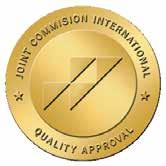







The Human Development Index, a measure of countries’ life expectancies, education and health levels as well as standards of living, has declined for two consecutive years straight in 2020 and 2021, and returned to what it was in 2016. This is the first time since its creation thirty years ago, according to the UN Development Programme (UNDP), which explained in a report that this “massive decline” includes more than ninety percent of the countries of the world.
The report warned that back-to-back global crises have set back human de velopment by five years. The international organization expressed its fear that wars and continuous tensions, including the war in Ukraine, would exacerbate the situation further.
However, medical reports from various organizations around the world con firmed the ability of the “large” health sectors to face crises on the one hand, and to quickly recover from the crises’ repercussions on the other hand. The health sectors increased their healthcare spending and set plans with the aim of not only maintaining their level of development, but also achieving quantum leap while expecting to get over the effects of the crisis in record time.
By the end of this year, we will have witnessed the opening of more stateof-the-art hospitals in the Arab world and worldwide. The health sector would have more hospotels, environmentally friendly hospitals and smart hospitals, and would have renewed its equipment and business strategies in order to pro vide better health to people and make the world a better place.
Publisher Arab Health Media Communication
President Simon Chammas schammas@tahmag.com
Executive Vice President Mirna Khairallah mirna@tahmag.com
Senior Editor Elham Najem editorial@tahmag.com
Content Executive Jessica Achkar editorial@tahmag.com
Editors
Aline Debes, Mark Steven, Don Karn, Andrew Weichert, Colette Semaan, Abbas Moussa
Content Marketing Manager Jessie Chlela jessie@tahmag.com

Creative Director Rania Khalil rania@tahmag.com
Business Development Manager Wadih Chammas wadih@tahmag.com
IT Manager Elie Yammine elie@tahmag.com Photographer Hanna Nehme Advertising advertising@thearabhospital.com
AHMC, Lebanon T/F: +961 4 53 40 58 M: +961 3 60 61 00
IHMC, Cyprus +357 96 158661 Dubai +971 50 2971007
Printing
Distribution
KSA - UAE - OMAN - TURKEY LEBANON - JORDAN - KUWAIT BAHRAIN - QATAR - EGYPT
All images from shutterstock© unless provided by clients .
All rights reserved by the HOSPITALS magazine. No part of this publication can be reproduced in any form without prior permission in writting from the publisher.

NEWS
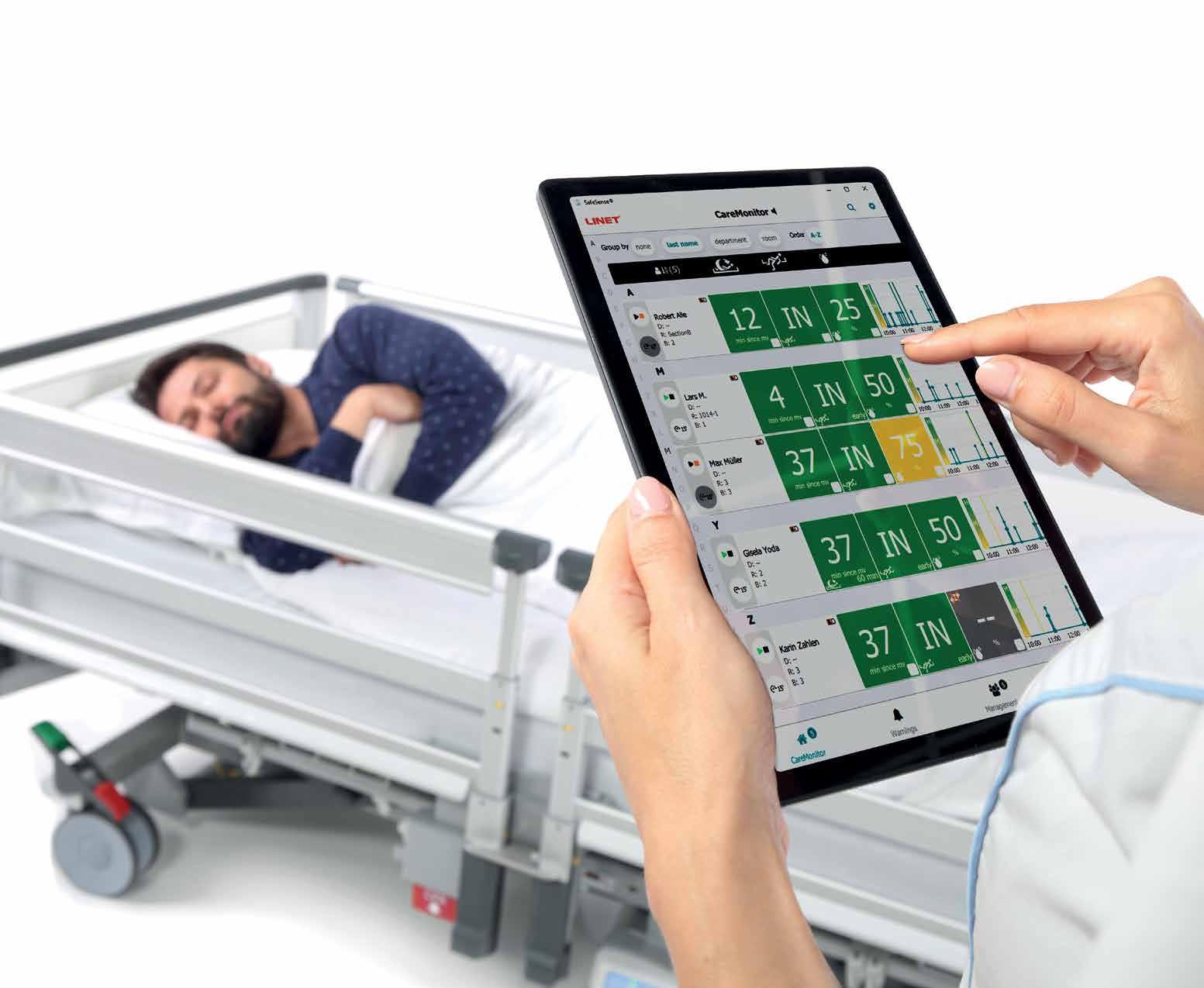
8 Arab Health to showcase the US$5 billion healthcare metaverse market
10 BestDoc Concierge wins the Innov8 Talks Start-up Competition at Global Health 2022, Saudi Arabia
12 BioArctic develops new treatment for Gaucher’s disease
14 Dr. Sumaya Al Blooshi of Emirates Health Services be comes 1st Emirati to be named as fellow of the American Academy of Nursing
24 American Hospital Dubai Performs the first cryoablation procedure for kidney cancer in the MENA region
28 The 13th International Conference of the Jordan Orthopaedic Association
30 Rasmus Waller appointed new CEO of Encare
30 Diabetes is Leading Cause of New Blindness in Adults; Many Don’t Know They Have It
32 Cleveland Clinic Abu Dhabi brings lifesaving, state-of-theart AI tech for diagnosing and treating stroke
34 HealthPlus diabetes conference urges the caregiver
community to join hands in combating diabetes
36 Jordanian Society for Digestive and Liver Diseases conference. Latest findings of medicine in gastroenterology and hepatology field
38 The Winners of the Grand Hamdan International Award Laud the Global Role of the Award
38 Al Ain’s Tawam Hospital complex double surgery to save 70-year-old from facial paralysis
40 C37 signs MOU with Canadian Specialist Hospital
42 American Association for Clinical Chemistry, Middle East Conference 2022 Adopt AI techniques to help improve clinical laboratory tests
68 High-achieving students secure a spot on WCM-Q Dean’s Honor List
70 The impact of science communication on health education and public engagement
82 DoH launches Abu Dhabi’s Community Campaign’ supporting the National Programme for Organ Donation and Transplantation
The smart combination of bed exit, motion monitoring, and wetness detection in order to help prevent falls and pressure injuries.

Available as an integrated solution or standalone option for the upgrade of the existing bed installed base.

44 Dr. Joel Roos, Vice President – International Accreditation, Quality Improvement and Safety for Joint Commission International
46 Dr. Aicha Hind Rifai, Assistant Professor of Clinical Psychiatry at Weill Cornell Medicine-Qatar (WCM-Q)
54 Mr. Khalid Al-Emadi, CEO at Al-Ahli Hospital / Qatar
60 Professor Muthanna G. Abdul Razzaq, President and CEO of The American University in the Emirates (AUE)
62 Gavin Cloherty, Head of Infectious Disease Research and Pandemic Defense Coalition at Abbott
50 Stem cell transplant team looks inward to improve survival rates for patients
Provided by UChicago Medicine
72 Arthritis Beyond Knowledge By Majid Abi Saab, Consultant Rheumatologist at Al-Ahli Hospital - Doha / Qatar 73 De Quervain’s tenosynovitis… A common cause of wrist
pain By Dr. Sumukh Arun Khandekar, Associate Consultant in Orthopedic at Al-Ahli Hospital - Doha / Qatar
84 BURNING OUT MAN... Burnout Syndrome at Generation Y & Z Employees by Aylin Altuntas, Founder at AA Executive Consulting and Board Member at Future Conferences 88 Digital Health by Dr. Hamzeh J. Awad, PhD, FHEA / Academician and Researcher in Digital Health and Public health Informatics
50 How to "bounce back" after cancer? Professors Didier Blaise, Patrice Viens and Pierre Dantin wanted to combine their skills to launch a revolutionary research program in France


Lexicomp® connects you to relevant drug information that supports you with drug dispensing, interactions, patient safety screening, medication therapy management, and more. Lexicomp helps pharmacists and other healthcare professionals ensure that patients receive the appropriate medication while making it easy to monitor and adjust treatment plans as needed.
With a subscription to Lexicomp, you will benefit from access to:
Continuously updated information on drugs, dosing, new medication uses, and more.
Several interactive medication safety tools, such as our drug interactions and drug ID tools.
Answers to medication-related questions that arise when dispensing drugs, monitoring patients’ drug therapies, advising interventions, and informing of any potential side effects.


Arab Health has underscored its commit ment to showcasing the latest advances in healthcare technology and innovation with the launch of the Intelligent Health Pavilion and the return of the Future Health Summit, which will explore healthcare in the Metaverse.

Taking place at the Dubai World Trade Centre from 30 January – 2 February 2023, Arab Health will host the Intelligent Health Pavilion in partnership with the Intelligent Health Associa tion and provide visitors with the opportunity to experience the most innovative and sustainable healthcare technologies improving patient care. Located in Arab Health’s Healthcare Transforma tion sector, the Intelligent Health Pavilion will feature three demonstration rooms showcasing several new technologies through live demon strations, including a groundbreaking digital Intensive Care Unit, an intelligent Operating Room, and a revolutionary Emergency Room. The new feature will also have a seminar theatre and provide a platform for exhibitors to reveal the latest cutting-edge healthcare technology.
Ross Williams, Exhibition Director for Informa Markets, said: “The healthcare indus try has witnessed incredible changes in recent years, with technology and innovation the driving force behind how the industry is elevat ing patient care. These latest advancements are expected to increase further by utilising the Metaverse and looking at how we interact with technology to utilise artificial intelligence (AI), augmented reality (AR) and virtual reality (VR) to improve patient outcomes.”
Doubling down on innovation and technolo gy, Arab Health will also host the second edition of the Future Health Summit at the Museum of the Future. The exclusive, fully immersive event for C-suite executives from the health care industry will look into the future of health and healthcare possibilities in the Metaverse. World-renowned industry leaders, visionaries, metaverse experts, authors, and futurists on
Ross Williamsthe topic will offer their insights. According to a report titled Healthcare in the Metaverse from Market Research Future, the healthcare metaverse market is predicted to grow at a Compound Annual Growth Rate (CAGR) of 48.3% until 2030, with the industry’s value expected to top US$5.37 billion.
ARAB HEALTH TO DOUBLE DOWN ON TECHNOLOGY AND INNOVATION WITH THE NEWLY LAUNCHED INTELLIGENT HEALTH PAVILION, WHICH WILL OUTLINE THE MOST INNOVATIVE AND SUSTAINABLE HEALTHCARE TECHNOLOGIES THROUGH LIVE DEMONSTRATIONS.
“The Future Health Summit is dedicated to trailblazers. From AI and robotics to the role of the Metaverse, the healthcare industry is continuously evolving. A result of cutting-edge technology combined with innovative leaders committed to improving patient outcomes,” said Williams. “The Metaverse is expected to disrupt healthcare and open new channels of treatment while lowering costs. The predicted growth within this market is huge, and we’ve only explored the tip of the iceberg. The Future Health Summit will provide an invaluable look at how everyone in the healthcare industry can maximize what it offers,” he added.
This year, Arab Health will see the return of popular start-up competition, Innov8 Talks, which will feature 24 companies showcasing unique and innovative solutions. At the same time, the Transformation Talks and Start-Up Zone will also explore the latest tech advance ments from global innovators and disruptors.

BD Concierge, the flagship product of BestDoc Technology Pvt. Ltd., has won first prize at the recent Innov8 Talks Start-up Competition. The competition was part of the Global Health Exhibition held in Riyadh, Saudi Arabia.

BD Concierge was among the 24 start-ups from Asia and Europe that participated in this competition. Four HealthTech innovations made it to the final round, where BD Concierge even tually emerged as the winner. The award under scores BD Concierge’s potential in accelerating digital transformation at healthcare facilities for improving patient and staff experiences.
Commenting on this win, Afsal Salu, Co-Founder and CEO of BestDoc said, “It’s a big honour and a responsibility to get recognition for Concierge, our innovative CX Technology solution, on a global stage. We would like to thank the eminent judges for validating the global potential of an innovation that’s being loved by hospitals in India and the GCC. Our next milestone is to ensure 500+ providers in the Middle East and APAC benefit from this solution by FY23.”
BestDoc Concierge is a SaaS-based, all-inone request management solution for patients, department staff, and administrators. By operating as a command center for IP patient requests, BD Concierge makes it simple for hospitals to always deliver top-notch IP patient services while maximizing operational effec tiveness. The multi-lingual solution (supports Arabic) enables patients to request & stay informed in real-time, while helping admin staff to understand who is working on the jobs, the turnaround time, and even get escalations for delayed or unassigned jobs.
Apart from patients, the device-agnostic solution is highly popular among housekeeping, maintenance, F&B and IT departments at hospi tals. It is also loved by nursing teams for its ability
THE COMMAND CENTRE FOR INPATIENT OPERATIONS HAS BEEN RECOGNISED FOR ITS PATIENT AND STAFF-FRIENDLINESS.
to reduce their non-clinical workload and allow ing them to focus on patient-centric activities.
Apart from its many benefits in healthcare, BD Concierge can help improve customer and staff experience in other sectors, such as hospi tality. Speaking of its broad appeal across indus tries, Midhun Subramanian, Head of Marketing at BestDoc said, “We are happy to see this recogni tion for BD Concierge and its universal appeal in improving customer and staff experiences. This is in line with our vision to provide 5-star hospi tality experience to all hospitals. The market vali dation of BD Concierge in the GCC market shows that the industry is ready and in fact demanding user-friendly digital transformation of patient experience, today.
The award includes prizes worth $20,000, in cluding a complimentary stand at Global Health Exhibition, 2023 and a 3-month mentorship program with the Ministry of Health, KSA.
BestDoc is a leading Patient Experience Solutions provider trusted by 250+ healthcare providers across India and the Middle East. More than 5 million patients have benefited from our patient experience solutions. BestDoc’s software solutions help provide a truly digital experience for patients and hospital staff.



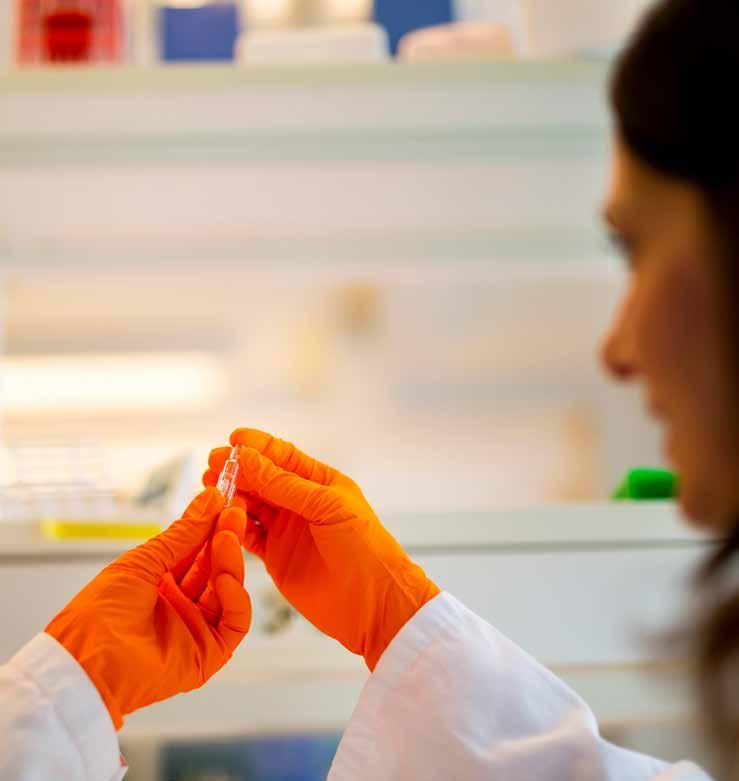
BioArctic AB (publ) (Nasdaq Stockholm: BIOA B) announced that the company has initiated a new project focused on enzyme replacement therapy for Gaucher’s disease in combination with the company’s Brain Transporter technology. Today there is no treatment available for neuropathic Gauch er’s disease, and BioArctic’s aim is to develop a therapy which also affects the neuropathic manifestation of the disease.
Gaucher’s disease is a rare genetic disorder in which a reduced function of the enzyme gluco cerebrosidase leads to the accumulation of gly colipids in certain organs. Symptoms range from mild to severe and can appear at any time, from infancy to old age, and include anemia, fatigue, easy bruising, and a tendency to bleed as well as an enlarged spleen and liver. In rare neuropathic Gaucher disease, neurological symptoms also occur which include difficulties controlling eye movements, unsteadiness, seizures and cogni tive impairment. 1 These patients usually experi ence the first symptoms in childhood and rarely survive 40 years of age due to the effects of the disease on the brain.
The standard of care today includes en zyme replacement therapy. These replacement enzymes do not, however, treat the neuropathic disease since the enzymes do not cross the blood-brain barrier and therefore do not reach the brain. By linking an enzyme replacement therapy to BioArctic’s Brain Transporter plat form, the company hopes to develop a treat ment that addresses the neuropathic as well as the peripheral manifestations of the disease.
“People with neuropathic Gaucher’s disease today have very limited treatment options. Using our expertise in neurological disorders, joint with our Brain Transporter technology platform, we hope to be able to change that and help these patients,” said BioArctic's CEO Gunilla Osswald
BioArctic AB (publ) is a Swedish re search-based biopharma company focusing on
GAUCHER’S DISEASE IS A RARE GENETIC DISORDER IN WHICH A REDUCED FUNCTION OF THE ENZYME GLUCOCEREBROSI DASE LEADS TO THE ACCUMULATION OF GLYCOLIPIDS IN CERTAIN ORGANS
disease-modifying treatments for neurodegen erative diseases, such as Alzheimer’s disease, Parkinson’s disease and ALS. BioArctic focuses on innovative treatments in areas with high unmet medical needs. The company was founded in 2003 based on innovative research from Uppsala University, Sweden. Collaborations with univer sities are of great importance to the company together with its strategically important global partner Eisai in Alzheimer's disease. The proj ect portfolio is a combination of fully-funded projects run in partnership with global phar maceutical companies and innovative in-house projects with significant market and out-licensing potential. BioArctic’s Class B share is listed on Nasdaq Stockholm Mid Cap (ticker: BIOA B). For more information about BioArctic, please visit www.bioarctic.com
1. https://gaucheralliance.org/what-is-gaucher-disease-2/



Dr. Sumaya Al Blooshi, Director of Nursing Department at Emirates Health Services (EHS) and the Head of the National Committee for Nursing and Midwifery Affairs at the UAE’s Ministry of Health and Prevention, has been officially named within the 2022 Class of Fellows of the American Academy of Nursing, becoming the first Emirati to achieve this pres tigious status and one of approximately 2,900 fellows including nursing leaders in education, management, practice and research worldwide.
The accomplishment marks another mile stone for the UAE, reflecting Emirates Health Services’ efforts to empower professionals across all its affiliated health facilities. Dr. Al Blooshi earned the title in recognition of her in ternational, regional and national contributions and achievements in advancing the nursing pro fession and adopting the latest research-based strategies that align with the national health priorities and global strategic directions. Also, she has been recognized for implementing technology-enabled clinical and non-clinical programs, and executing international best practices, in addition to her efforts in enhancing the nursing profession in the UAE and empow ering nursing youth.
“I am proud of this landmark achievement,” said Dr. Al Blooshi. “It demonstrates the ad vanced status and capabilities of our national talent in the health sector, and embodies the UAE’s commitment to supporting and em powering UAE nationals in every industry. This accomplishment compels us to make even more efforts and work harder to cement our lead ership in the healthcare sector.” Dr. Al Blooshi added “Being named as fellow encompasses the responsibility to best represent UAE and engage actively with other health leaders in transform ing health systems by enhancing the quality of health and nursing care, promoting efficient community health in support of healthy be haviours and healthy aging, reducing health dis
Dr. Sumaya Al Blooshi
parities, integrating mental and physical health, and strengthening the nursing and health deliv ery system, nationally and internationally”.
DR. SUMAYA AL BLOOSHI IS THE FIRST EMIRATI TO BE NAMED AS FELLOW OF THE AMERICAN ACADEMY OF NURSING.
“The nursing profession has gained tremen dous importance in the UAE, and particularly within Emirates Health Services, which highly prioritizes the development and empower ment of expert national nurses, in an effort to provide world-class healthcare and support na tional projects aimed at highlighting the critical role that nurses play in light of the health crises taking place around the world,” she added. “This, in turn, is consistent with the strategies and objectives of EHS, which has launched a series of training and educational programs to encourage young men and women to join the profession and play a pivotal role in the health care system.”
The American Academy of Nursing Fellow ship is the highest international fellowship in the nursing profession, awarded by the Acad emy to outstanding professionals who have made an unmistakeable impact on the nursing profession, or nursing professionals, ultimately benefiting the healthcare sector as a whole.
The Academy named a total of 250 nursing leaders around the world in its 2022 Class of Fellows. Those fellows have been se lected based on their contribution to health and healthcare. The new Fellows were inducted at the Acad emy’s annual Health Policy Conference, which took place on October 27-29, 2022 in Washington, DC.
The American Academy of Nursing formed in 1973 is one of the top professional organiza tions driving the development of the nursing profession around the world. The Academy serves the public and the nursing profession by advancing health policy through organizational excellence and effective nursing leadership. The Academy and its more than 2,900 mem bers, known as Fellows, create and execute evidence-based and policy-related initiatives to advance healthcare. Academy Fellows are nurs ing's most accomplished leaders in education, management, practice, and research. Fellows include association executives, university presi dents, chancellors, and deans, state and federal political appointees, hospital chief executives and vice presidents for nursing, nurse consul tants, researchers, and entrepreneurs.












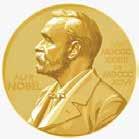

Acıbadem Healthcare Group began its journey into healthcare services as a small neighborhood hospital in a district of Is tanbul/Turkiye. Today, Acıbadem is a global chain operating in 5 countries including Turkiye, Bul garia, Macedonia, Serbia, and the Netherlands with its 24 hospitals, 14 outpatient clinics.
Today, Acıbadem Healthcare Group is a global brand in medical tourism by providing the highest quality of services using advanced technologies and expert teams meeting the international quality standards like Joint Com mission International (JCI) and ISO 15189 Clinical Laboratory Accreditation Certificate. Every year, many patients from different parts of the world travel to Turkiye to receive treatment, and they prefer Acıbadem.
In order to provide comfort, trust and sta bility, Acıbadem offers to international patients a comprehensive range of services including consultations, diagnostic procedures, billing and insurance, travel and accommodation arrange ments and translation services.

Acıbadem International Patient Service Cen ter has been designed as a “one-stop center” and offers healthcare services from the day of the re quest until the time the patient returns to their home country within 20 different languages.
As a globally renowned chain in the medical field and Turkiye’s leading Healthcare Group, Acıbadem continues to grow rapidly. The Group launched its newest hospital - Acıbadem Ataşehir - as their 10th hospital in Istanbul and their 24th in the world. Acıbadem Ataşehir is recognized for its unique architecture, advanced medical


technology, and digital systems exclusively devel oped by the Group in the field of health man agement. It has been built with an indoor area of 65,000 sqm. and certified by LEED Gold for its 'Eco-Friendly' and 'Smart Building' features.

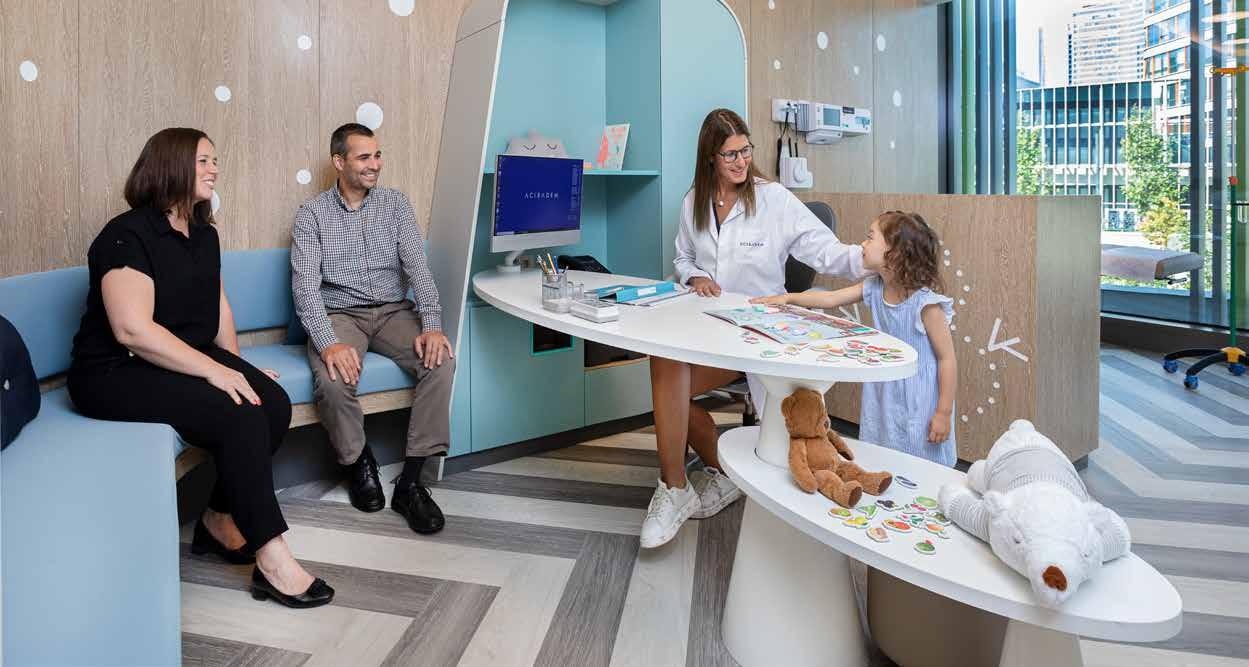
Acıbadem Ataşehir provides treatments in all branches of medicine, yet it serves particular care to oncology, gynecology, brain surgery, orthopedics, IVF and pediatric patients thanks to the hospital’s unique design and features that accommodate for their every need, thus ensur ing patient safety and satisfaction. The hospital has 153 patient rooms, 298 patient beds, 10 operating theatres, 1 IVF operating room, an endoscopy/colonoscopy, and angiography inter vention rooms.
Constructed on a separate building, the ar chitecture of the 2-floor Pediatrics Department
welcomes a child-friendly environment, an envi ronment that keeps child patients entertained with activities and play areas and distracts them from the hospital atmosphere.


The Pediatrics Department operates 24 hours with specialist physicians from all branch es and sub-branches. Observation rooms are located near the entrance of the polyclinic with direct separate access for children with fever and infections. For blood tests and vaccinations, children and their families can visit the dedicat ed unit without entering the polyclinic. Addition ally, to satisfy children’s playful nature, there is a colorful carousel right outside the pediatrics building for them to enjoy their time and have fun during their stay at Acıbadem hospital.
At Acıbadem Ataşehir, the Obstetrics and Gynecology polyclinic is located on the ground floor and consists of the Gynecologic Oncology
unit, an IVF Center, and the Perinatology center. The hospital, known for its world-class services for expectant mothers, has been designed so that all the procedures regarding childbirth and labor are completed on a single floor and there by ensures that patients will receive assistance in the fastest and most convenient way.

The Oncology Clinic has been designed specifically for the needs of patients undergo ing oncology treatments and can be accessed through its own separate entrance; it is served by a team of experienced specialists using a multidisciplinary approach. There are a total of 34 Chemotherapy Treatment Units in the clinic, 30 of which are outpatients and 4 inpatients, all equipped with advanced technological diagnos tic and treatment systems.


Acıbadem Ataşehir Hospital welcomes its visitors with a digital artwork at its main en trance, the artwork was created specifically using data art. The data of 145,580 babies born in Acıbadem hospitals, were used to exclusively design an inspirational art piece for the hospital by the renowned data artists Hakan-Süleyman Yılmaz brothers, who are acclaimed for their digital artworks in Turkey. In the artists' work called "Newborn", each newborn baby is rep resented by a flower symbol according to the month in which they were born. The art piece will not be limited to the babies born in the past, but henceforth every baby born in Acıbadem will take its place in the artwork as its own new flower. In this way, the art piece highlights itself as a 'living' digital artwork.
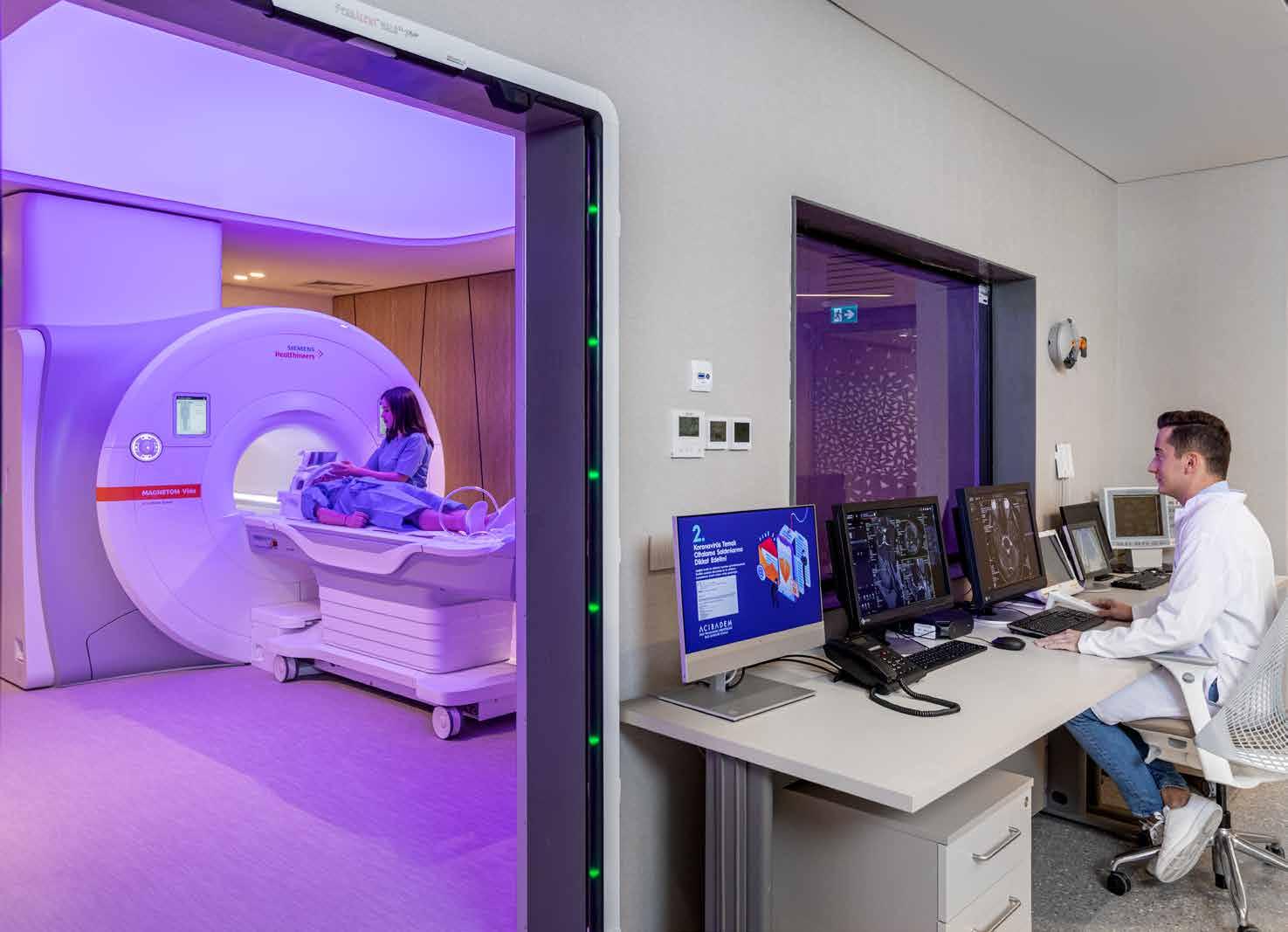

Arab Health generated business worth $781 million in 2022*. Leverage new opportunities to grow your company by applying for a stand at Arab Health 2023.

*GRS survey
Scan the QR code to apply for a stand

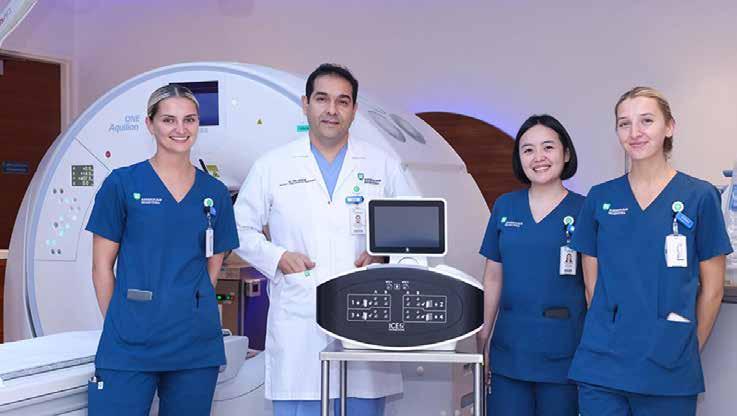
American Hospital Dubai performed the first successful cryoablation procedure to remove Renal Cell Carcinoma (RCC) in the Middle East and Africa (MENA).
The most advanced treatment for kidney cancer, cryoablation, uses freezing temperatures to destroy malignant cells, i.e., average tissue temperature of 37°C versus probe temperature of approximately −140°C.
Cryoablation is used for curative and palliative purposes, leading to a rapid recovery, improved comfort, less pain, and fewer compli cations. The procedure, which involves intro ducing several probes under image guidance to target the lesion, was completed in under two hours with no complications, with the patient under sedation.
Dr. Aws Sarmed Alfahad, Consultant Interventional Radiologist and Director of Interventional Radiology at American Hospital, has extensive expertise in this field. He has per formed many successful cryoablation therapies abroad and worked with his multidisciplinary colleagues to develop this service at American Hospital Dubai.
"This treatment will benefit many patients in the region and will be part of a range of thera peutic options available to patients at AHD," said Dr Alfahad. "It took about two years of meetings, coordination, and negotiations to bring this ad vanced treatment to American Hospital. And we are proud to be leading the way."
"I want to thank my colleagues for their excellent support and collaboration in success fully performing the first cryoablation of RCC in the Middle East and Africa. It strengthens our objective of ensuring the best outcomes for our patients," he added.
The patient made a quick recovery with minimal discomfort. He developed no hematuria, started eating and drinking after the procedure, and was discharged the next morning. A review
at the AHD interventional radiology clinic a few days showed he remains well.
Cryoablation has several advantages compared to other procedures, such as RFA (Radiofrequency ablation) and microwave ablation. Firstly, the tissue energy transfer characteristics do not appreciably change with temperature, unlike in RFA, where the tissue desiccates at high temperatures, and no further energy transfer is possible. It means the size of the ablation zone can be effectively determined, controlled, and increased in cryoablation better than in heatbased ablation.
Secondly, cryoablation is associated with significantly lower post-procedure pain. Third ly, the treatment can accurately target lesions through cross-sectional image guidance, thus preserving non-cancerous renal tissue. Lastly, the procedure requires just a few mm of skin to enable probes to reach the target lesion and therefore, has superior cosmetic results compared to traditional surgery.
American Hospital Dubai is a leader in can cer treatment, therapy, and minimally invasive techniques in the UAE and the region. Its radiol ogy department offers cutting-edge facilities that consistently set benchmarks for outcomes, patient safety and world-class treatments.
THIS TREATMENT WILL BENEFIT MANY PATIENTS IN THE REGION AND WILL BE PART OF A RANGE OF THERAPEUTIC OPTIONS AVAILABLE TO PATIENTS AT AHD," SAID DR ALFAHAD. "IT TOOK ABOUT TWO YEARS OF MEETINGS, COORDINATION, AND NEGOTIATIONS TO BRING THIS ADVANCED TREATMENT TO AMERICAN HOSPITAL. AND WE ARE PROUD TO BE LEADING THE WAY.
DR. AWS SARMED ALFAHAD














HRH Princess Basma Bint Talal inaugu rated the 13th International Conference of the Jordan Orthopaedic Association (JOA) which featured a wide Arab and interna tional participation.

The conference aims at exchanging exper tise among participants on the latest scientific and medical developments in orthopaedics.
Princess Basma stressed that Jordan’s host ing of such events reflects the Kingdom’s status in the medical sector, and its developments in various medical specializations which made it a popular destination for medical tourism in the region.
The princess said that orthopaedics, in cluding artificial limbs, in Jordan has witnessed “remarkable” development over the past few years after the introduction of several modern technologies, noting that the Kingdom saw some 25,000 orthopaedic surgeries at public and private hospitals in 2021.
Anas Tamimi, Head of the Conference’s Sci entific Committee, said that the event included 70 lectures that discussed 160 scientific papers and 12 workshops on all sub-categories of ortho paedics, noting that the conference attracted 25 experts from more than 13 countries.
Firas Dabubi, President of JOA and the con ference, said that Jordan is moving ahead with developments in the medical sector, referring to the large increase of the number of hospitals in the public and private sectors.
Secretary General of the Health Ministry Raed Shboul, Deputising for the Health Minister, said that the number of orthopaedic surgeons who passed the Jordanian boards increased to 120, and the number of resident surgeons increased to 140, noting that surgical services for artificial limbs are now offered at 10 hospitals, up from four in the past.
On the sidelines of the conference, Princess Basma inaugurated a medical exhibition that showcased the latest innovations in orthopae dics of the Jordanian and international medical fields. The conference also highlighted a pub lished study conducted on 1,268 patients in pub lic and private hospitals over the course of three years on hip fraction deaths among the elderly. It showed that 12.8 percent of elder people with hip fractions die of complications, while global rates stand at 20 percent. The conference's Scientific Committee Chairman, Anas Altamimi, said a laparoscopic spine surgery performed by Jordanian and foreign teams was broadcasted live from Al-Kindi Hospital's operations room to the conference's hall. Bone fractions constitute 30 percent of cases coming through emergen cies departments, he added, calling for raising awareness on safety measures.
Altamimi indicated that the conference discussed new treatment methods for the spine and foot deformities, recurrent shoulder dislocation, shoulder joint implantation (reverse shoulder), joint implants, orthopedic corrections, and shoulder arthroscopy.
REMARKABLE DEVELOPMENT IN JORDAN AFTER THE INTRODUCTION OF SEVERAL MODERN TECHNOLOGIES.
The Continuing Professional Development Division at Weill Cornell Medicine-Qatar provides high-quality professional development opportunities for healthcare professionals based on the latest scientific and medical advances that increase competence, enhance performance and improve healthcare for patients.
Visit: qatar-weill.cornell.edu/continuing-professional-development/


Rasmus Waller has been appointed the new CEO of Encare. Prior to joining En care, he served as a CCO for Platform24, the market-leading player of digital platforms for virtual healthcare. Rasmus Waller took office on August 25.
Rasmus Waller started as the new CEO at Encare on August 25. Most recently, he served as Chief Commercial Officer (CCO) at Platform 24, the market-leading player in virtual care for both public healthcare providers and health in surance companies. Previously, he served as Vice President of Sales at the medical record system company Cambio Healthcare System and was responsible for several international ventures, among other things. In total, Rasmus Waller has more than 20 years of health tech experience.
Rasmus Waller succeeded Anna Pettersson, interim CEO, who took office when Urban Ad olfsson left the company in March 2022.
"We are very pleased to welcome Ras mus Waller as CEO of Encare. Rasmus deeply understands the healthcare market and has a well-proven track record of building strong customer relationships and managing rapid growth in Sweden and abroad. With his drive and business acumen, he will be able to lead En care's operations forward following our offen
RASMUS WALLER TAKES OFFICE IN CONJUNCTION WITH THE COMPANY'S CAPITAL RAISING OF SEK 26 MILLION IN A SHARE ISSUE LED BY SCIETY. THE NEW CAPITAL WILL ACCELERATE INTERNATIONAL EXPANSION AND STRENGTHEN THE ORGANIZATION IN PRODUCT DEVELOPMENT.
sive strategy," says Sören Johansson, Chairman of the Board at Encare.
Rasmus Waller takes office in conjunction with the company's capital raising of SEK 26 million in a share issue led by Sciety. The new capital will accelerate international expansion and strengthen the organization in product development.
"I am thrilled to take on this new challenge and responsibility of leading Encare, a company with a unique offer and positioning. Few health tech companies can offer a solution whose ben eficial effects – better and more cost-effective healthcare – are repeatedly proven in published studies. It is also fascinating that Encare is a global company that operates on five continents. I see great opportunities for Encare to accelerate its growth, and I hope to be able to contribute with my drive and experience to growing com panies when Encare is now scaling up. And I look forward to doing my best to complement an already solid team on this journey, says Rasmus Waller. "I also want to take the opportunity to thank Anna Pettersson as interim CEO and Sören Johansson as working Chairman of the Board for his work with the share issue. As a result, Encare can now accelerate globally while we develop our internal organization”, says Rasmus Waller.
According to the 2022 National Diabetes Statistics Report from the Centers for Disease Control and Prevention (CDC), more than 11% of the U.S. population (approximately 37.3 million people) has diabetes. The study also found that 38% of adults 18 and older in the U.S., some 96 million people, have prediabetes. Diabetes is the leading cause of new blindness among adults from 18 to 64, according to a Prevent Blindness news release.
Dr. Daniel Laroche, a top New York City eye specialist, said, “To help prevent diabetes, it is essential to have an excellent diet with salads, vegetables and fruits, and reduce bread and rice intake. Exercise 30 minutes a day. Meditate for 15-30 minutes a day. Drink green tea, and reduce sleep apnea and snoring by sleeping on the side and not directly on your back. Controlling weight helps to reduce diabetes and retinopathy.” Many people with diabetes may not know about the damaging effects the disease can have on vision. “Regular dilated eye examinations are essential to detect diabetic retinopathy early and provide vision saving treatments when ready,” he added. “Over time, these diseases can lead to blindness, so it’s best to address them as soon as possible,” said Dr. Laroche. “We have new treatments with earlier surgical options that can help preserve (or restore) their vision with faster recovery times.”
Rasmus Waller

Cleveland Clinic Abu Dhabi, a Mubadala Health partner, has adopted another leading innovation. The ARTIS Icono, the most advanced stroke interventional system in the region, incorporates 2D and 3D imaging with ar tificial intelligence. It is a potentially life-changing innovation that is now being made available for patients in the UAE who suffer from stroke, a seri ous condition caused by a blood clot in the brain.
“With victims of ischemic stroke, the most common type of stroke, timing is crucial,” said Dr. Khalil Zahra, Chief of Neuro-interventional Surgery in the Neurological Institute of Cleve land Clinic Abu Dhabi. “Minutes count. Typically, we aim for a maximum of about six hours from symptom onset to perform what is called a neu ro-thrombectomy, a procedure that dissolves the clot in a patient’s brain. This new system makes that process much faster and more precise, which will save lives.”
In traditional stroke intervention, the patient begins with a CT scan, and surgeons review imaging manually before operating to dissolve the blood clot. The ARTIS Icono transforms this process using artificial intelligence to deliver unparalleled image quality and reconstruction in real-time. Surgeons can skip a CT scan and begin treatment immediately. This saves precious time, gives surgeons far better visibility, and exposes the patient to less harmful radiation.
“According to the World Health Organiza tion, one in four people run the risk of having a stroke in their lifetime. In the UAE, about 25 percent of UAE adults have hypertension, which puts our population at greater risk of having a stroke,” said Dr. Zahra. “Here, stroke is the leading cause of disability and the third leading cause of death. It has never been more crucial to have the most innovative technology available for treating patients. This highly sophisticated system will ultimately help us give stroke victims the finest care in the world and the best possible chance of recovery.”
The ARTIS Icono is only one of many tech nological innovations that Cleveland Clinic Abu Dhabi, recently ranked the top smart hospital in the region by Newsweek, is using to bring patient care into the future. The new system will be housed at the Neurological Institute’s Neu rovascular Medicine Program and Stroke Center at Cleveland Clinic Abu Dhabi, which offers a full range of the latest diagnostic and treatment op tions for patients with stroke and other cerebro vascular conditions.
In honor of World Stroke Day on October 29, Cleveland Clinic Abu Dhabi is encouraged the community to learn the signs of stroke using the acronym F.A.S.T. – because minutes can save lives: Face drooping Arm weakness
Speech difficulty
Time to call 998
Cleveland Clinic Abu Dhabi has been the des ignated stroke center for Abu Dhabi since receiv ing its official designation by the Department of Health – Abu Dhabi in 2015. Their surgeons have conducted more than 500 thrombectomies in the last seven years.
THE HIGHLY SOPHISTICATED SYSTEM IS ONE OF MANY TECHNOLOGICAL INNOVATIONS CLEVELAND CLINIC ABU DHABI IS USING TO TRANSFORM PATIENT CARE.

Experts in the field of diabetes converged in Abu Dhabi for the Diabetes for Prima ry Care conference, hosted by Health Plus Diabetes and Endocrinology Centre, a Mubadala Health partner. The one-day confer ence, held under the theme ‘At the Heart of Diabetes’, was launched by Alexander Schon felder, Ambassador of the Federal Republic of Germany to the UAE and Dr Mohammed Al Khatib, Conference Chairman, and Medical Di rector Consultant, Internal Medicine, Endocri nology and Diabetology, HealthPlus Diabetes and Endocrinology Centre.
Dr. Mohammed Al Khatib said: “The UAE has shown tremendous progress in the health care sector over the last decade. As the cooper ation between Germany and the UAE continues to grow, it is proof of the strong relationship our two countries hold.”
Emphasizing the need to tackle the rise of the chronic disease, the conference attendees engaged in a series of sessions. These sessions were designed to guide the medical community to drive awareness and education to tackle some of the contributing factors accelerating the prevalence of diabetes across the UAE and the wider region.
Dr Al Khatib said: “As we’re seeing an upward global trend in the prevalence of diabetes, and with the region prone to these lifestyle diseases, the conference could not have come at a more


critical time. The conference aimed to shed light on the latest guidelines, research and technolo gies in the field of diabetes.” He added: “It also served as a platform to help the healthcare com munity understand the impact the pandemic has had on people’s lifestyles and on their health; particularly as, we’ve seen a rise in younger dia betic patients diagnosed, something that we’ve not seen to this scale before. As we continue to tackle one of the most pressing issues in this field, it is essential for the medical community to urge people to focus on their health.”
Speaking on type 2 diabetes post bariat ric – remission, burden and risks, Dr. Hazem Al Momani, Head of Surgery and General Surgery Consultant at Danat Al Emarat Hospital, Abu Dhabi, UAE, said: “Diabetes and obesity is becom ing a disease of the young. We know that with early onset obesity, the likelihood of developing diabetes increases at a younger age. This tells us that the health and sustainability of our society is dependent on us investing in the young.”
Professor Dominik Bergis, Medical Director, Diamedicum Wuerzburg, Germany said: “The conference is important to show what’s possible in the management and treatment of diabetes. This includes discussing the latest technologies and something we’ve always dreamed of in diabetology call a ‘closed loop’, which we’re now starting to implement into patient’s daily practic es to help them improve their diabetes control and management.”
The conference agenda covered issues from the field of diabetes including obesity and metabol ics, remission, vision management, burden and risks associated with bariatrics and addressing dyslip idemia, one of the major cardiovascular side effects of diabe tes. The conference also discussed the role nutrition plays in managing diabetes in its early stages, the latest guidelines and technologies in managing the disease, as well as areas of research that can help discover the future outlook of this chronic disease.
For decades, our team at Baylor St. Luke’s Medical Center, located in Houston, Texas, has been committed to providing leading-edge care delivered with compassion. And today, that focus remains the same. We are proud to be ranked among the nation’s best by U.S. News & World Report, and to continue providing exceptional care for our patients each and every day.




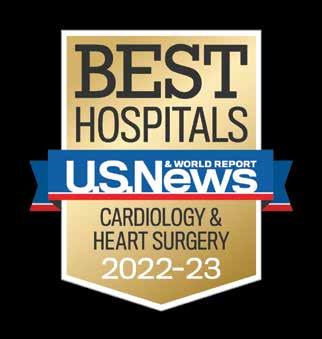
Learn more at StLukesHealth.org/bslmcinternational

The nineteenth conference of the Jordanian Society of Gastroenterology and Hepatolo gy, and the ninth conference of the Middle East African Society of Gastroenterology, started in Amman. Under the patronage of Princess Bas ma Bint Talal, the three-day conference is aimed to discuss the latest findings of medicine in gastroenterology and hepatology field, develop solutions to current challenges and draw future plans for cooperation and knowledge-transfer.
In a speech at the opening, Princess Basma Bint Talal expressed her appreciation for the role of Jordanian medical societies, including the Gastroenterology Society, the Jordanian Royal Medical Services (JRMS) and the Jordanian pub lic and private sectors, in keeping pace with all that is modern and new in the medical field and transferring expertise to doctors.
Princess Basma noted the seriousness of digestive diseases, the disorders resulting from them and their impact on human immu nity and the growth of children. She under scored the great development in medicine, including in the digestive system in terms of
diagnosis and treatment, noting the special importance that the Jordanian medical sector attaches to the public and private sectors to benefit from modern technologies and to provide medical personnel with the necessary skills and expertise.
For his part, the President of the Jordanian Society of Gastroenterology and Hepatology, Dr. Yousef Ajlouni, talked about the impor tance of the partnership between the Society and the African Middle Eastern Society of Gastroenterology and Hepatology in organis ing the conference to enable the exchange of experiences and information and discussing everything related to diseases of the digestive system and liver.
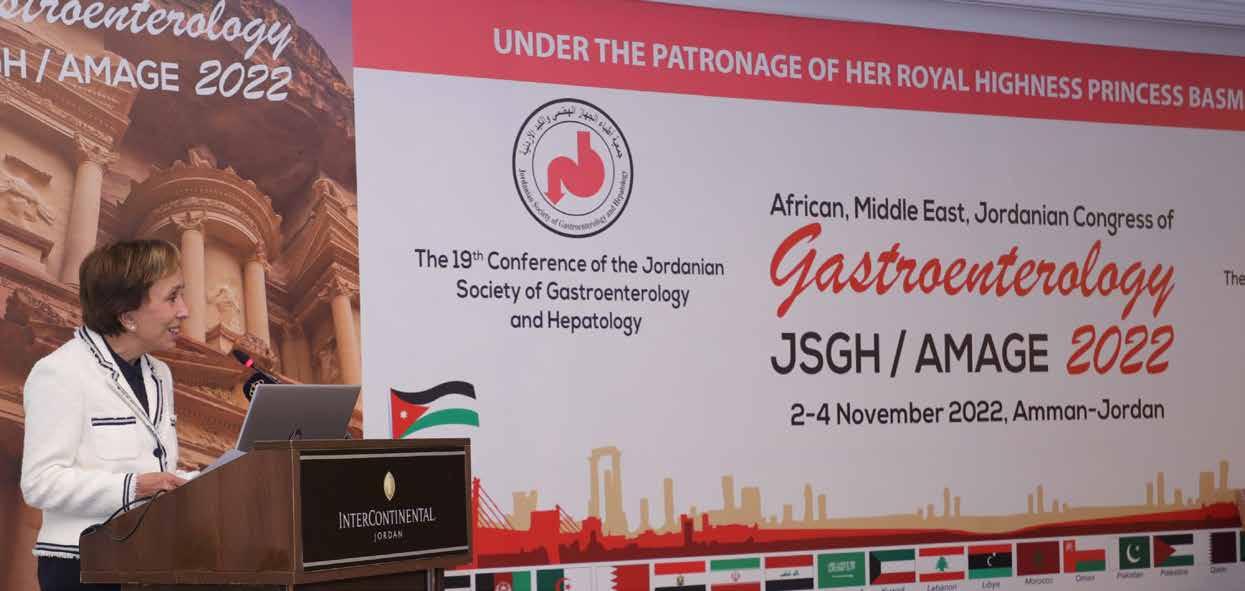
He said that the administrative board of the Jordanian Society of Orthopedic Diseases has prepared a scientific programme for the con ference, in which a group of experts and con sultants from different countries of the world would participate to shed light on all medical developments in this field in both the theoretical and practical aspects.
UNDER THE PATRONAGE OF PRINCESS BASMA BINT TALAL, THE THREE-DAY CONFERENCE IS AIMED TO DISCUSS THE LATEST FINDINGS OF MEDICINE IN GASTROENTEROLOGY AND HEPATOLOGY FIELD, DEVELOP SOLUTIONS TO CURRENT CHALLENGES AND DRAW FUTURE PLANS FOR COOPERATION AND KNOWLEDGETRANSFER.
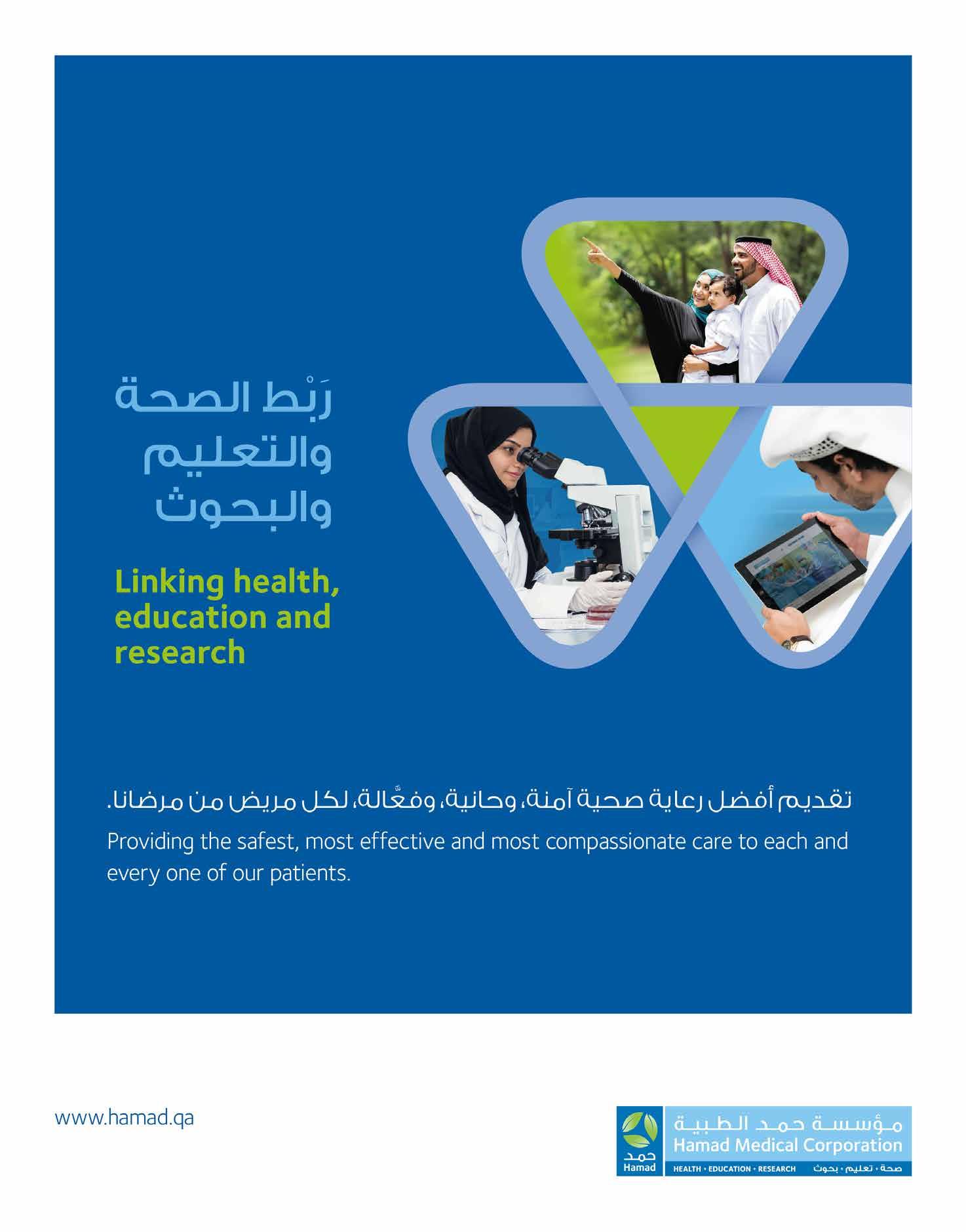
help raise awareness of the need to take action now against cervical cancer through vaccination and screening with the aim of preventing the 300,000 deaths occurring globally each year from this disease.”
Prof. Dr. Ian Fraser of the University of Queensland in Brisbane, Australia and the joint winner of the Hamdan International Prize with the late Dr. Jian Zhou, expressed his appreciation and happiness for receiving the Grand Hamdan International Award for the twelfth session (2021-2022) on the subject of infectious diseases.
Prof. Ian Fraser said, “This honor which recognizes research undertaken by myself and by my late colleague Dr. Jian Zhou has enabled the production of vaccines now available to pre vent cervical cancer and other Human Papilloma virus-related disease. I thank the judging panel for their foresight and for timing this Award to coincide with the World Health Organization’s current global campaign to eradicate cervical cancer by the end of this century. The Award will
THE AWARD WILL HELP RAISE AWARENESS OF THE NEED TO TAKE ACTION NOW AGAINST CERVICAL CANCER THROUGH VACCINATION AND SCREENING WITH THE AIM OF PREVENTING THE 300,000 DEATHS OCCURRING GLOBALLY EACH YEAR FROM THIS DISEASE.
PROF. IAN FRASER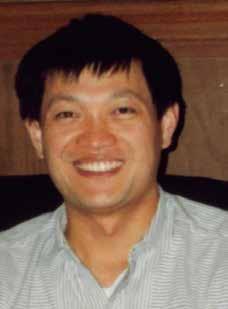

Dr. Xiao Yi Sun, wife of the late Dr. Jian Zhou said, “It is an honor to receive this Award on Jian’s behalf. Recognition at this level ac knowledges his work. It also allows his legacy to live on inspiring future generation of scientists. Jian’s research work with human papillomavirus commenced in 1984. He was the first to create the HPV virus-like particles, and it was this re markable achievement which led to the devel opment of the cervical cancer vaccine in 1991.
He continued his research until 1999 when sadly he passed away at only 42. The Sheikh Hamdan Award will ensure his foundation continues his important legacy. On behalf of my late husband, I offer my warmest thanks to the Award committee and the Judging Panel.”
For his part, His Excellency Abdullah bin Souqat, Executive Director of the Hamdan Medi cal Award, offered his sincere congratulations to the winners, and stressed that the Award will always work to achieve the vision of its founder, the late Sheikh Hamdan bin Rashid Al Maktoum, in honoring outstanding achievements in the medical sector.
Doctors at Al Ain’s Tawam Hospital per formed a two-step complex head and neck surgery to remove a tumour from a 70-year-old patient with skin cancer. They used neuro-monitoring to ensure facial nerve integrity.
Dr. Muwaffaq Al Ani, oral maxillofacial con sultant, Tawam Hospital, at Abu Dhabi Health Services Company (Seha), said that the patient

THEY USED NEUROMONITORING TO ENSURE FACIAL NERVE INTEGRITY.
had basal cell carcinoma, which had spread extensively through his face.
“The complete resection surgery was par ticularly unique and complicated owing to the proximity of the tumour to his eye, brain, and facial nerve. Therefore, neuromonitoring played a critical role in this surgery's success to ensure that we maintain the integrity of the facial nerve and prevent facial paralysis.
Prof. Dr. Ian Fraser Dr. Xiao Yi Sun Abdullah bin SouqatAl Ain’s Tawam Hospital complex double surgery to save 70-year-old from facial paralysis
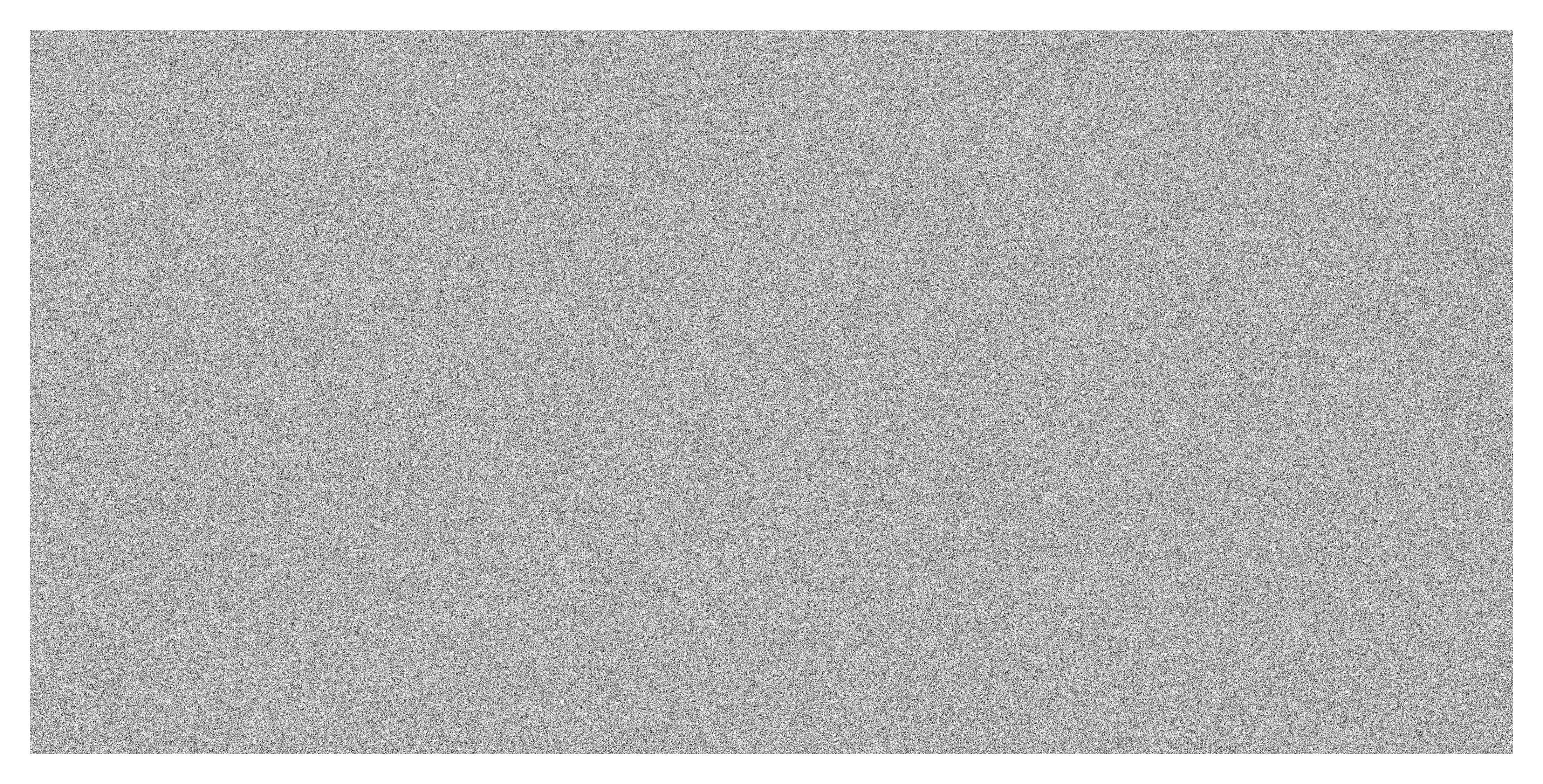




C37, the UAE’s first private medical co-working space, managed and oper ated by Dubai Healthcare City (DHCC), signed a Memorandum of Understanding with the Canadian Specialist Hospital (CSH) to lever age both parties’ facilities and workspaces.
Under this partnership, CSH doctors with out private clinics at the hospital will be able to receive patients and provide consultations at C37's medical workspaces. Additionally, CSH will enable surgeons registered with C37 to perform their operations in the hospital’s fully-equipped facilities. The collaboration promotes DHCC's po sition as a specialized hub for healthcare invest ments, and further attracts talented surgeons to take advantage of the integrated facilities provided by both parties.
Mr. Jamal Ahmad Abdulsalam, CEO, Dubai Healthcare City Authority, said: “Through this agreement, we look forward to enabling the con cept of healthcare without borders and activating partnerships to serve patients at DHCC. Through C37, doctors from the Canadian Specialist Hospi tal will be able to take advantage of our strategic location and advanced infrastructure. The leading platform provides doctors with an integrated destination that allows them to focus on provid ing quality healthcare services. Moreover, this agreement offers C37 doctors enhanced oppor tunities to benefit from the advanced facilities of the Canadian Specialist Hospital.”
Dr. Yashar Abdul Qader, CEO and Medical Manager at CSH, added: “We are proud to col
laborate with C37 and DHCC to help our doctors provide their services to the largest possible number of patients and expand their profes sional network. We are pleased to put our latest equipment and facilities at the disposal of C37’s surgeons to serve the community and the health sector alike. As part of this agreement, we will offer various medical and administrative facilities to C37 surgeons to facilitate their work.”
DHCA launched the C37 platform last year, offering state-of-the-art medical co-working spaces and services to a large segment of independent and visiting doctors. The platform provides the opportunity to rent various spaces on a monthly or annual basis, as well as leverage its infrastructure and premium support services to ensure efficiency and success.
CANADIAN SPECIALIST HOSPITAL WILL ALLOW SURGEONS REGISTERED WITH C37 TO PERFORM SURGERIES WITHIN ITS STATE-OF-THEART OPERATING ROOMS .

the health care system and play a critical role in disease management, and doctors heavily rely on them in the clinical decision,” he said.
Medical experts have proposed a set of recommendations to adopt the use of Artificial Intelligence (AI) techniques in laboratories following the impact of the Covid-19 pandemic, which showed the great importance for these new technologies.
The doctors also highlighted the need to work on raising women’s awareness in the region through early screening of cervical cancer.
During the closing day of the American Association for Clinical Chemistry, Middle East Conference 2022 (AACC) at the Grand Hyatt Hotel in Dubai, the medics recommended enhancing the efficiency and effectiveness of medical institutions and modifying their strate gic objectives so they are able to keep pace with the latest administrative developments, advance the future of laboratory medicine and leadership contribution.
Dr. Hosam Fouad, Founder and CEO of Life Diagnostics Laboratories in Abu Dhabi, stressed the need to use Artificial Intelligence (AI) in vari ous fields of laboratory analysis, especially in the areas of tumor diagnosis, which can give more accurate results in the quickest period possible.

“Clinical laboratories are an integral part of
Dr. Joe Mohamed El-Khoury, Assistant Pro fessor of Laboratory Medicine and Co-Director of the Clinical Chemistry Laboratory at Yale Uni versity, USA, said laboratories around the world need to adopt the use of Artificial Intelligence science and technologies in examining samples for accuracy and reducing the time spent on waiting results. “It was important for laboratories in the Middle East to adopt the use of modern technologies as an alternative to sending samples to other countries for testing and examination through use of "mass spectrometry" techniques, which measure the quantities of samples in the blood, and other modern techniques,” he said.
The experts also stressed the need to im prove laboratory performance through self-ex amination and adopting sample anticipation techniques, especially when taking a sample from the patient until it reaches the laboratory official. The conference also recommended expanding the types of tests for Alzheimer’s disease, which helps 90 per cent of doctors adopt appropriate treatment plans according to the tests. Physicians also need to monitor the performance of devices used in laboratories by comparing the results of those samples, whether for one patient or for several patients and using tests called “Diabetes Inventory” in order to achieve high accuracy in the results and examina tion of diabetes detection.
The doctors stressed the importance of strengthening laboratory services, improving operational efficiency and quality, elevating stan dards and measures used in laboratories in the Middle East, and being keen on important up dates in the field of laboratory medicine, includ ing blood cancer, applications of tandem masses, and the diagnosis of autoimmune disorders.
DURING THE CLOSING DAY OF THE AMERICAN ASSOCIATION FOR CLINICAL CHEMISTRY, MIDDLE EAST CONFERENCE 2022 (AACC) AT THE GRAND HYATT HOTEL IN DUBAI, THE MEDICS RECOMMENDED ENHANCING THE EFFICIENCY AND EFFECTIVENESS OF MEDICAL INSTITUTIONS AND MODIFYING THEIR STRATEGIC OBJECTIVES SO THEY ARE ABLE TO KEEP PACE WITH THE LATEST ADMINISTRATIVE DEVELOPMENTS, ADVANCE THE FUTURE OF LABORATORY MEDICINE AND LEADERSHIP CONTRIBUTION.










Before Dr. Joel Roos joined Joint Commis sion International (JCI) as Vice President of International Accreditation, Quality Improvement and Safety two years ago, he served for 30 years in the U.S. Navy, where he spent a lot of time on the receiving end of the Joint Commission surveys. Now that he’s on the other side of the table—observing people getting ready for surveys and conducting anal ysis—he’s uniquely positioned to share what he knows about the journey toward high reliability. “Hospitals” magazine sat down with Dr. Roos to learn about the organizations that need to know about the accreditation process.
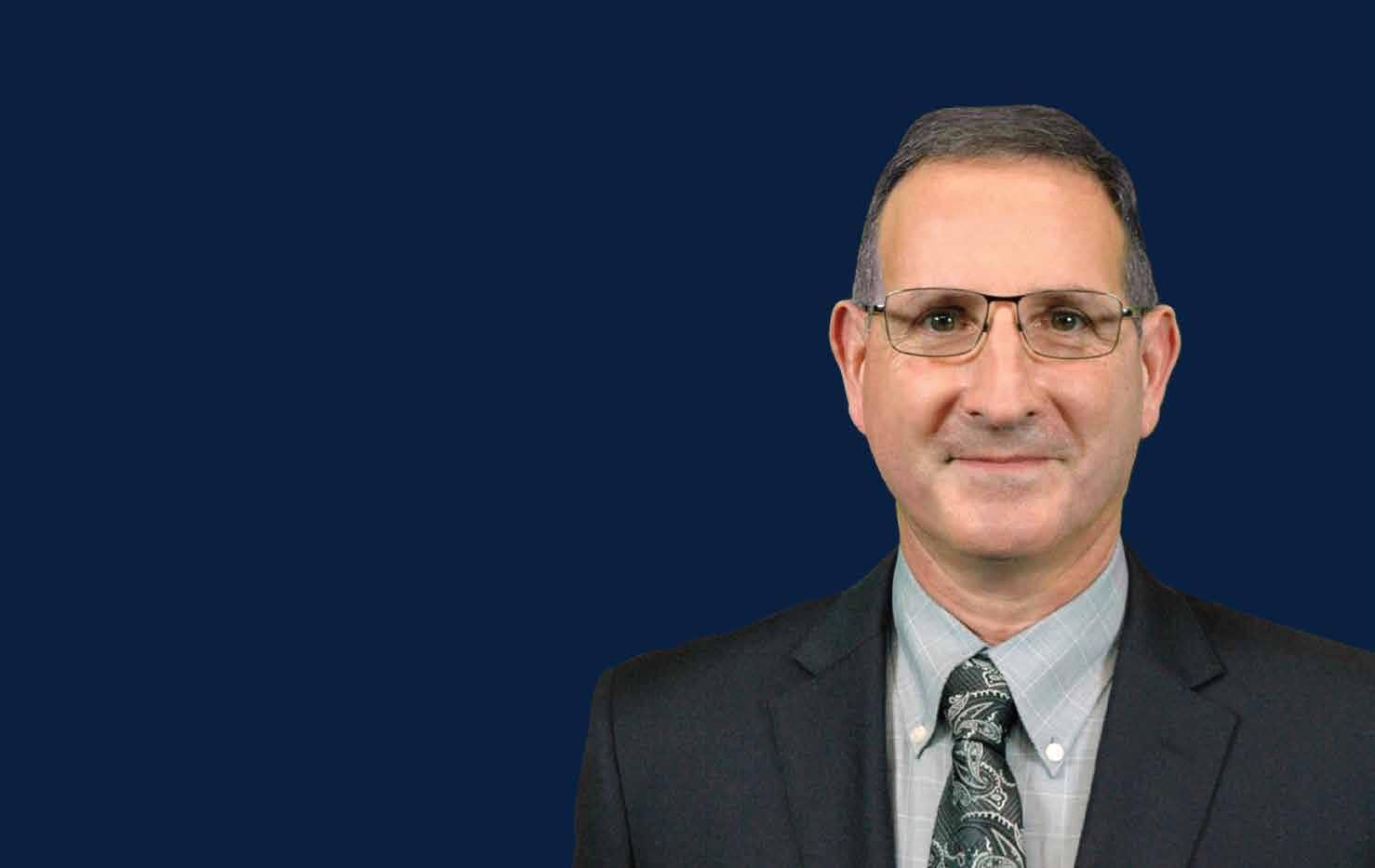
JOINT COMMISSION INTERNATIONAL (JCI) STANDARDS DEFINE THE PERFORMANCE EXPECTATIONS, STRUCTURES AND FUNCTIONS THAT MUST BE IN PLACE FOR A HEALTHCARE ORGANIZATION TO BE ACCREDITED BY JCI.
Does JCI work only with major hospitals and academic medical centers, or can smaller or newer systems achieve accreditation, too?
The size and age of your health system real ly doesn’t matter. Whether you’re large or small, new, or well established, we’re ready to work with any organization committed to excellence.
While accreditation is an important tool in setting the groundwork for high reliability and zero harm, to achieve it an organization must have a certain level of quality improvement and patient safety standards, infrastructure, skills, and resources in place. In terms of actual types
of healthcare organizations, there’s a wide spec trum – Academic Medical Centers, Hospitals, Ambulatory clinics, Home Healthcare organiza tions, Laboratories, etc..
What advice would you give organizations considering pursuing accreditation?
First, I would urge any organization to seri ously consider what’s required to achieve accred itation. After all, it is a commitment of time and money. The results are worth it, though. JCI has also worked hard to create products and tools to support healthcare organizations throughout the accreditation process. JCI Evaluate, for exam ple, is a tool that helps organizations conduct pa tient safety and quality self-assessments, so they can get a feel for whether they’re truly ready for accreditation right now or need to work on some areas first in order to get there.
When you speak with organizations considering JCI services, what are some of the key points you stress about regarding how they can develop a culture of quality and safety?
A culture of quality and safety is a leadership initiative. Until leadership commits, the rest of the organization will not follow. And it’s more than just a commitment of financial resources. Healthcare systems also need to demonstrate a dedication to improving care for everyone who walks through the door. In fact, as part of the accreditation process, organizations must take a hard look at where their problems are—and have a true desire to fix them. When they learn about things they aren’t doing well, or have a bad outcome, they must ask questions like “What did we learn from this?” and “How do we make it better?”
Would you please provide a brief overview of the JCI standards, the survey process, and the value that the surveyors bring to it?
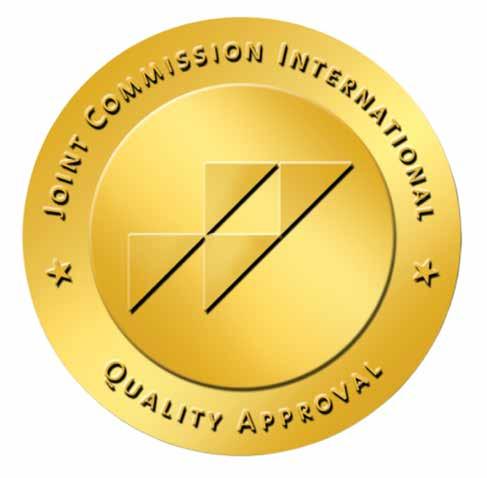
Joint Commission International (JCI) stan dards define the performance expectations, structures and functions that must be in place for a healthcare organization to be accredited by JCI. The survey process is really based on evaluating against these standards, which span across patient-centric and organizational man agement functions. For example, our standards
focus on access to care and continuity of care, anesthesia and surgical care, infection control and prevention, medication management, lead ership and governance, information manage ment, and facility management to name a few of the areas. The survey process, itself is a very robust and rigorous process. When a health care organization successfully completes the survey, it signals patients and the community it is serving that the organization has undergone an exacting performance assessment and met a robust series of qualifications in patient safety and quality of care, resulting in the Gold Seal of Approval® symbolizing the commitment to excellence. The standards and the processes we use are basically our intellectual property. However, they come to life with the surveyors. The JCI surveyors are the “heart and soul” of JCI, the surveyors come from a variety of backgrounds. We have nurs es, physicians, healthcare administrators—all very seasoned people who are dedicated to teaching and improving quality and patient safety. They’re experienced. They’re passionate about what they do. And they bring that passion for improvement, day in and day out, to every healthcare organization they evaluate.
Thank you, Dr. Roos for this insightful discussion. Where can people get more information about JCI and your services?
My pleasure. Thank you for giving me the opportunity to share these perspectives. The JCI website (www.jointcommissioninternational.org) has a wealth of trusted resources, designed to help any health system looking to improve qual ity of care and patient safety. It’s our hope that the information you need to keep your organiza tion moving toward continuous improvement is just a few clicks away.

Assistant Professor of Clinical Psychiatry at Weill Cornell Medicine-Qatar (WCM-Q)
“The Certificate in Health Humanities is open to all healthcare professionals, including physicians, nurses, pharmacists and dentists, but also to allied health professionals and medical students."
Dr. Aicha Hind Rifai is Assistant Professor of Clinical Psychiatry at Weill Cornell Medicine-Qatar (WCM-Q). A firm believ er in the healing potential of the arts, Dr. Rifai is a researcher and practitioner in the health humanities field. Dr. Rifai is the co-director of a two-part certificate course offered by the Divi sion of Continuing Professional Development at WCM-Q which aims to equip professionals working in the health sector with key skills and knowledge relating to therapeutic uses of the medical humanities in clinical settings. The course, entitled Certificate in Health Human ities: Clinical Applications, comprises three modules that revolve around the application of Narrative Processing Therapy, Life Review and Visual Art Therapy for patients with specific clinical conditions.
Dr. Rifai is a diplomate of the American Board of Psychiatry and Neurology in Psychi atry and in Geriatric Psychiatry. She is also a diplomate of the American Board of Internal Medicine. Prior to joining Weill Cornell Medi cine Qatar, Dr. Rifai served as a clinician teach er in a variety of academic and clinical settings. Dr. Rifai received her M.D. from the University of Aleppo Faculty of Medicine in the Syrian Arab Republic.
Can you please explain a little about the Certificate in Health Humanities and its applications?
The certificate program is co-directed by myself and my WCM-Q colleague Dr. Krystyna Golkowska, PhD and we have designed it to give healthcare practitioners in many fields the opportunity to explore established therapeutic uses of the medical humanities in the clinical setting. The certificate is delivered in two parts, the first of which focuses on the benefits of narrative disciplines and creative art approach es. In the second part, we focus on three therapeutic approaches that have a strong basis in research regarding their effectiveness, these being Narrative Processing Therapy (NPT), Life Review, and Visual Art Therapy (VAT). The certificate also explores the methodology of these interventions and their effectiveness in
THE CERTIFICATE EXPLORES THE METHODOLOGY OF THESE INTERVENTIONS AND THEIR EFFECTIVENESS IN CERTAIN CONDITIONS SUCH AS POST-TRAUMATIC STRESS DISORDER (PTSD), END-OF-LIFE AND PALLIATIVE CARE AND OTHER CLINICAL SETTINGS. THESE ARE CIRCUMSTANCES IN WHICH THE HEALTH HUMANITIES CAN BE PARTICULARLY BENEFICIAL FOR PATIENTS, THEIR LOVED ONES AND THEIR CAREGIVERS.
certain conditions such as Post-Traumatic Stress Disorder (PTSD), end-of-life and palliative care and other clinical settings. These are circum stances in which the health humanities can be particularly beneficial for patients, their loved ones and their caregivers.
Can you tell us a little more about these three approaches?
Narrative Processing Therapy (NPT) is currently one of the leading evidence-based psychotherapies used in the treatment of Post-Traumatic Stress Disorder (PTSD) resulting from a variety of experiences (rape, abuse, civil ian and military personnel in war zones, survi vors of natural disasters, and so on). NPT utilizes narrative techniques and techniques of story telling and remembering, and is administered individually or in groups. Through narration, newer studies have documented the efficacy of short courses of this therapy, as well as benefits lasting up to 12 months or more. The research shows that most people who complete a short course of NPT show a noticeable improvement in PTSD symptoms.
Life Review was developed by a Ger man-American developmental psychologist and psychoanalyst named Erik Erikson. Studies in old er adults on reminiscence and Life Review and narrative psychology have shown that it is not the past events themselves but their personal meaning that is pertinent in regulating identity development, well-being, and mental health across the lifespan. In hindsight, people may look back upon their lives and discover their past as a source of insight and inspiration even when facing adversity. Studies have shown the efficacy of Life Review in depression and in palliative care and in grief situations in the elderly. Although the intervention was initially used in aging pop ulations, its application in young adults facing a critical illness or following psychological trauma has shown significant efficacy.
Visual Art Therapy (VAT) has been shown to be useful for patients of all ages in many
healthcare settings, but this certificate focuses mainly on its use in the areas of end-of-life and palliative care, where it is beneficial not only for patients but also for caregivers. As terminal ill ness invokes physical, psychological, and spiritual manifestations in patients, research has shown that art can help decrease feelings of pain, and also decrease the use of painkillers. This is ben eficial because painkillers can dull the emotions and at times increase cognitive impairment, thus interfering with the ability of patients to interact with their families and complete important emo tional tasks that bring positive feelings of closure for patients and their loved ones.
Art can also calm anxiety about death and promote hope and the integration of the hu man domains of functioning in patients nearing the end of their lives. Similarly, teams engaged in the care of the terminally ill have found sup port and equilibrium in VAT to help them face grave situations with patients and their families and prevent burnout. We believe this approach is effective because humans need meaning in their lives and one of the main functions of creative endeavors is to bring meaning into life and lived experiences.
At whom is the Certificate in Health Humanities aimed?
The certificate is open to all healthcare pro fessionals, including physicians, nurses, pharma cists and dentists, but also to allied health pro fessionals and medical students. We also find the certificate popular with medical residents. We feel it is important to note that using the humanities in healthcare should not be viewed as the exclusive preserve of psychiatrists or psychologists. The health humanities have been found to be beneficial for patients in almost all healthcare settings and useful for healthcare practitioners in almost all fields. Indeed, when the movement in the health humanities really began to gain momentum in the United States about 15 years ago it was promoted by and for all types of healthcare professionals. We do see a lot of interest from nurses who feel they want to add something more to their skills to allow them to go beyond the standard, traditional medical approach.
THE COURSE IS BASED UPON THREE ONLINE MODULES (ONE PER WEEK) WHICH DISCUSS THE THREE THERAPEUTIC APPROACHES IN TURN, GUIDED BY MYSELF AND DR. GOLKOWSKA, EACH OF WHICH TAKES AROUND FIVE HOURS TO COMPLETE. WE INTRODUCE EACH MODULE WITH A SYNCHRONOUS MEETING, EACH OF WHICH BEGINS WITH A PRESENTATION ABOUT THE THERAPEUTIC APPROACH AT HAND; THIS IS THEN FOLLOWED BY A GROUP DISCUSSION AND A Q&A SESSION. OTHER ACTIVITIES INCLUDE REFLECTIONS ON ASSIGNED MULTIMODAL TEXTS AND THREE WRITTEN ASSIGNMENTS. EACH CERTIFICATE COURSE SPANS THREE WEEKS IN TOTAL.
How is the certificate course delivered?
The course is based upon three online modules (one per week) which discuss the three therapeutic approaches in turn, guided by myself and Dr. Golkowska, each of which takes around five hours to complete. We introduce each module with a synchronous meeting, each of which begins with a presentation about the therapeutic approach at hand; this is then followed by a group discussion and a Q&A session. Other activities include reflections on assigned multimodal texts and three written as signments. Each certificate course spans three weeks in total.
How can healthcare professionals integrate the medical humanities into their normal practice?
Because the humanities are by their nature based on human behavior, we find that many healthcare professionals are naturally doing some of the things that the three approach es recommend. That’s why there is so much interest in these skills because they feel, to many health professionals, like important but somewhat overlooked part of healthcare. It is something that a lot of people who go into the health professions are interested in in the first place—being empathic, being interested in people, asking questions, wanting to know more about the person to whom they are pro viding care.
So, the skills that we are giving them here are complementary to something that they are already doing, it validates their belief that this is important and effective, and gives them mo tivation and skills to do it in a certain way that is more productive and beneficial.
What competency gap does the certificate program seek to address?
There are many studies showing clear evidence of the benefits of all three of the interventions we explore in this certificate program, but the biological model of medicine that has become more dominant in the last 20 to 30 years with the discovery of a lot of very effective medications has made some people forget the tradition of medicine that we are
asking to return to. Because the really great physicians from history who we look up to as role models understood the need to treat both the body and the soul, because you cannot separate them. If you look at the biographies of people like Ostler (Canadian physician and educator William Ostler, 1849-1919; called the ‘father of modern medicine’) or Charcot (French neurologist and educator Jean-Martin Charcot, 1825-1893; known as the ‘founder of modern neurology’) you see they had a great under standing of and interest in both the soul and the body.
The best practitioners have always been the ones who are close to their patients, who know their patients really well, to whom patients come with personal stories and dilemmas, not just because they have one symptom and they need a pill. In the last 15 or 20 years, this move
BECAUSE THE HUMANITIES ARE BY THEIR NATURE BASED ON HUMAN BEHAVIOR, WE FIND THAT MANY HEALTHCARE PROFESSIONALS ARE NATURALLY DOING SOME OF THE THINGS THAT THE THREE APPROACHES RECOMMEND.
ment of narrative medicine, narrative therapies, and humanities in medicine has identified this gap and developed research and educational programs to address it. Indeed, many medical school programs now integrate these approach es into their curricula; this certificate program aims to address this gap but with a broader focus that allows a wider range of health pro fessionals to gain skills in this field. We feel this approach will allow more patients, their loved ones and more health professionals to benefit from these highly effective narrative-based in terventions which we feel make very important contributions to overall health and well-being.

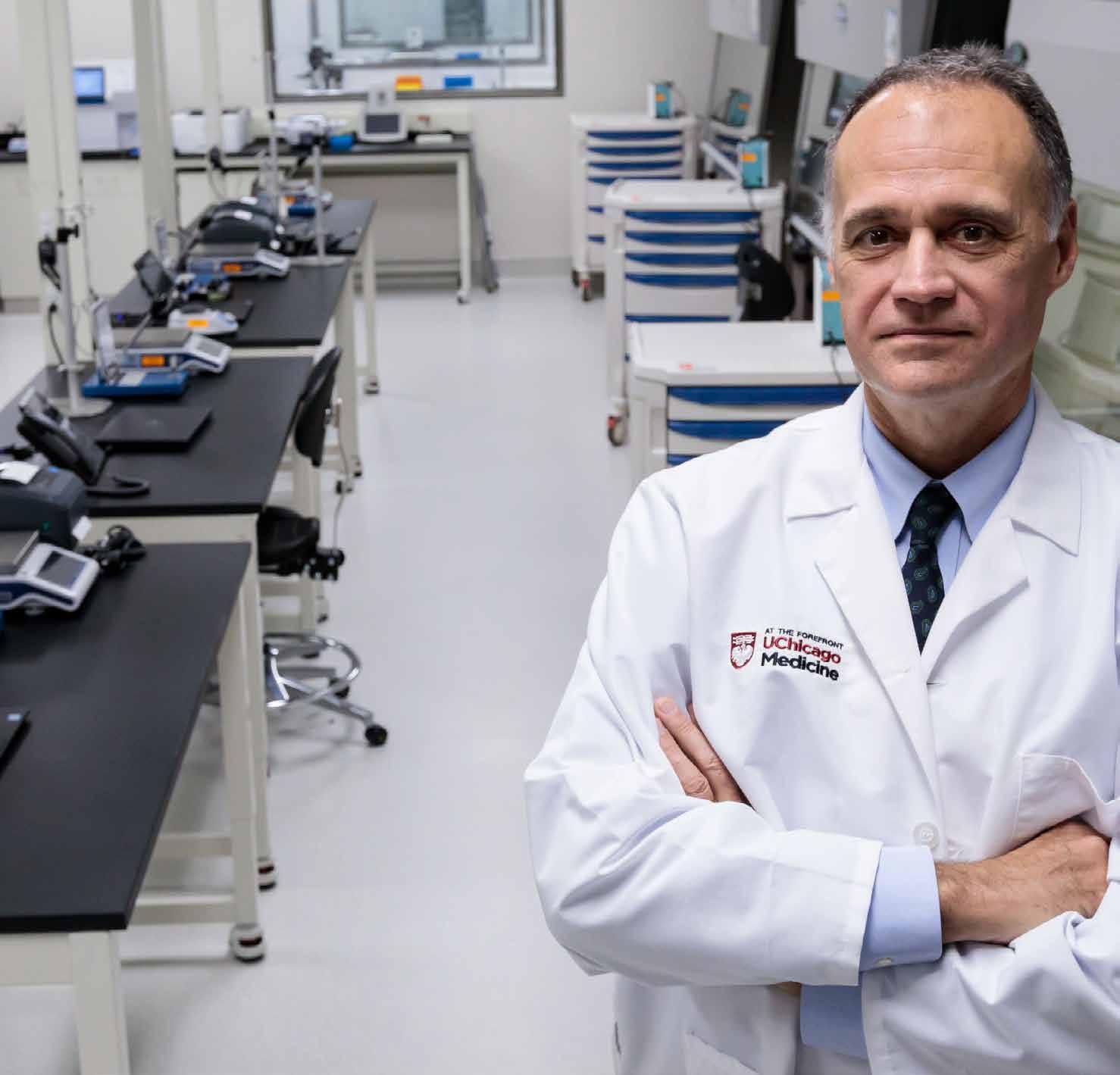
When a car stops running, the cause usually turns out to be a broken part that needs to be replaced. Similarly, in the bone marrow of patients with blood diseas es, the stem cells responsible for creating blood cells are not working as they should. Through a procedure known as stem cell transplant, some times referred to as bone marrow transplant, the sick patient’s diseased bone marrow and immune system can be replaced with healthy stem cells from a donor.
Today, the procedure is used for many cancers and blood diseases once considered incurable. For some types of blood diseases, a stem cell transplant is the standard of care; for others, it’s only considered if other treatments have been unsuccessful.
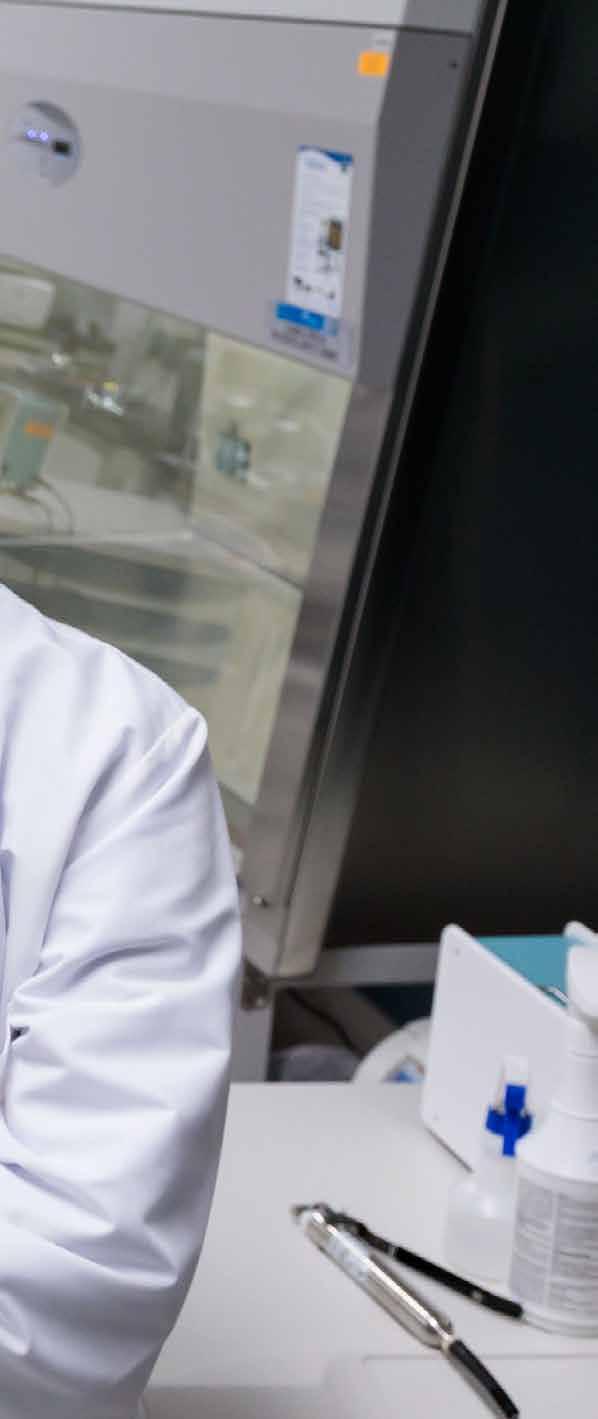
Although thousands of people who have cancer and other diseases have been cured with stem cell transplantation, there are risks asso ciated with the treatment, and complications are common. The most serious concerns are the disease coming back, or relapsing, and another complication is where the new transplanted immune system attacks the normal cells of the patient, known as graft-versus-host disease.
Patients must be followed closely after the transplant to address these complications as they arise. Clinicians and data analysts metic ulously document complications following transplant and patient long-term survival. This data informs clinicians on how best to treat patients over time and can be an indication of how individual programs are doing.
The data is also collected by the Center for International Bone and Marrow Transplant Re search (CIBMTR), an organization dedicated to improving survival, treatment and quality of life for transplant patients. Every year, the group issues a report with the outcomes data from
ALTHOUGH THOUSANDS OF PEOPLE WHO HAVE CANCER AND OTHER DISEASES HAVE BEEN CURED WITH STEM CELL TRANSPLANTATION, THERE ARE RISKS ASSOCIATED WITH THE TREATMENT, AND COMPLICATIONS ARE COMMON. THE MOST SERIOUS CONCERNS ARE THE DISEASE COMING BACK, OR RELAPSING, AND ANOTHER COMPLICATION IS WHERE THE NEW TRANSPLANTED IMMUNE SYSTEM ATTACKS THE NORMAL CELLS OF THE PATIENT, KNOWN AS GRAFTVERSUS-HOST DISEASE.
LOOKS INWARD TO IMPROVE
all 172 transplant programs across the United States, including UChicago Medicine.
This information can help patients, families, referring providers and insurance companies identify the transplant centers that are the best at treating blood cancers like leukemia, myelo dysplastic syndromes, myelofibrosis, myeloma and lymphoma. It also gives transplant centers a way to assess the quality and effectiveness of their programs year-over-year. UChicago Medi cine's most current outcomes data reflects the results of work initiated by the hematopoietic stem cell transplantation team several years ago.
In 2015, newly arrived stem cell transplant and cellular therapy expert Michael Bishop, MD, Professor of Medicine, viewed the CIBMTR rank ings as a tremendous opportunity to establish UChicago Medicine as one of the premier stem cell transplant programs both nationally and internationally.
Things were off to a great start because of UChicago Medicine’s strengths in research. UChi cago Medicine offers patients access to more innovative clinical trials than any other hospital in the region. Its physicians are internationally recognized experts in their fields. UChicago Medicine is also home to the David and Etta Jonas Center for Cellular Therapy, where scien tists work on making the next breakthroughs in cellular therapy, especially CAR T-cell therapy, an emerging form of cancer treatment.
Bishop, as Director of the Hematopoietic Stem Cell Transplantation Program, rallied his team and together they began a journey to deliver “the absolute best clinical care.”
Sharing Bishop’s passion, the transplant team scrutinized every aspect of the program to find areas that needed improvement, down to the way data was being entered. “We left no rock unturned,” said Bishop.
Led by Bishop and Assistant Director of Clinical Operations Mylove Mortel, MSPH, RN, OCN, the initiatives involved revisiting three years’ worth of charts and looking at how chemotherapy was selected, how patients were monitored after transplant, what was done to prevent infections and how patients were
supported as their immune system adapted. If any of these steps did not work as well as they could, they were changed.
“It’s generally not one major big problem — it’s many little problems,” Bishop said. “You have to fine-tune the details and optimize every single component so the patient will do well.”
The improvements the team made estab lished a standard for how patients would be assessed, treated and followed up every single time. According to Bishop, consistency in care is what leads to improved outcomes.
Meanwhile, both the adult and pediatric stem cell transplant programs experienced a steady increase in transplant volume and the number of transplant specialists working in the clinic. James LaBelle, MD, PhD, Associate Pro fessor of Pediatrics and Director of the Hema topoietic Stem Cell Transplantation Program at UChicago Medicine Comer Children’s Hospital, said that when he arrived at Comer Children’s in 2012, there were two transplant physicians and one advanced practice transplant nurse.
Since then, the program has grown to include four physicians, three advanced practice nurses, a dedicated data manager and a staff of clinical research associates. Due to this growth, Comer Children’s Hospital has been ranked by CIBTMR separately from UChicago Medicine’s adult program since 2016. LaBelle says this was possible only because the pediatric program got its own dedicated team.
Because the adult and pediatric groups share the same infrastructure and scientific leadership, they are able to communicate fre quently and learn from one another, which also helps improve clinical care, LaBelle said.
“One aspect that makes UChicago Medicine unique is that although we have a dedicated pediatric program and an adult program, our teams are exceedingly symbiotic,” said LaBelle. “We can offer adults therapies that are typically used for young adults and vice versa. A lot of our treatments cross age barriers.”
While the adult and pediatric stem cell trans plant programs have shown gradual, consistent
LED BY BISHOP AND ASSISTANT DIRECTOR OF CLINICAL OPERATIONS MYLOVE MORTEL, MSPH, RN, OCN, THE INITIATIVES INVOLVED REVISITING THREE YEARS’ WORTH OF CHARTS AND LOOKING AT HOW CHEMOTHERAPY WAS SELECTED, HOW PATIENTS WERE MONITORED AFTER TRANSPLANT, WHAT WAS DONE TO PREVENT INFECTIONS AND HOW PATIENTS WERE SUPPORTED AS THEIR IMMUNE SYSTEM ADAPTED. IF ANY OF THESE STEPS DID NOT WORK AS WELL AS THEY COULD, THEY WERE CHANGED.
improvement over the years, it wasn’t until the 2020 CIMBTR annual report that the results were indisputable: UChicago Medicine had the best one-year outcomes in Chicago and the highest relative to their predicted outcomes. The pediatric program at Comer Children’s Hospital also ranked highly, with actual survival numbers surpassing predicted outcomes.
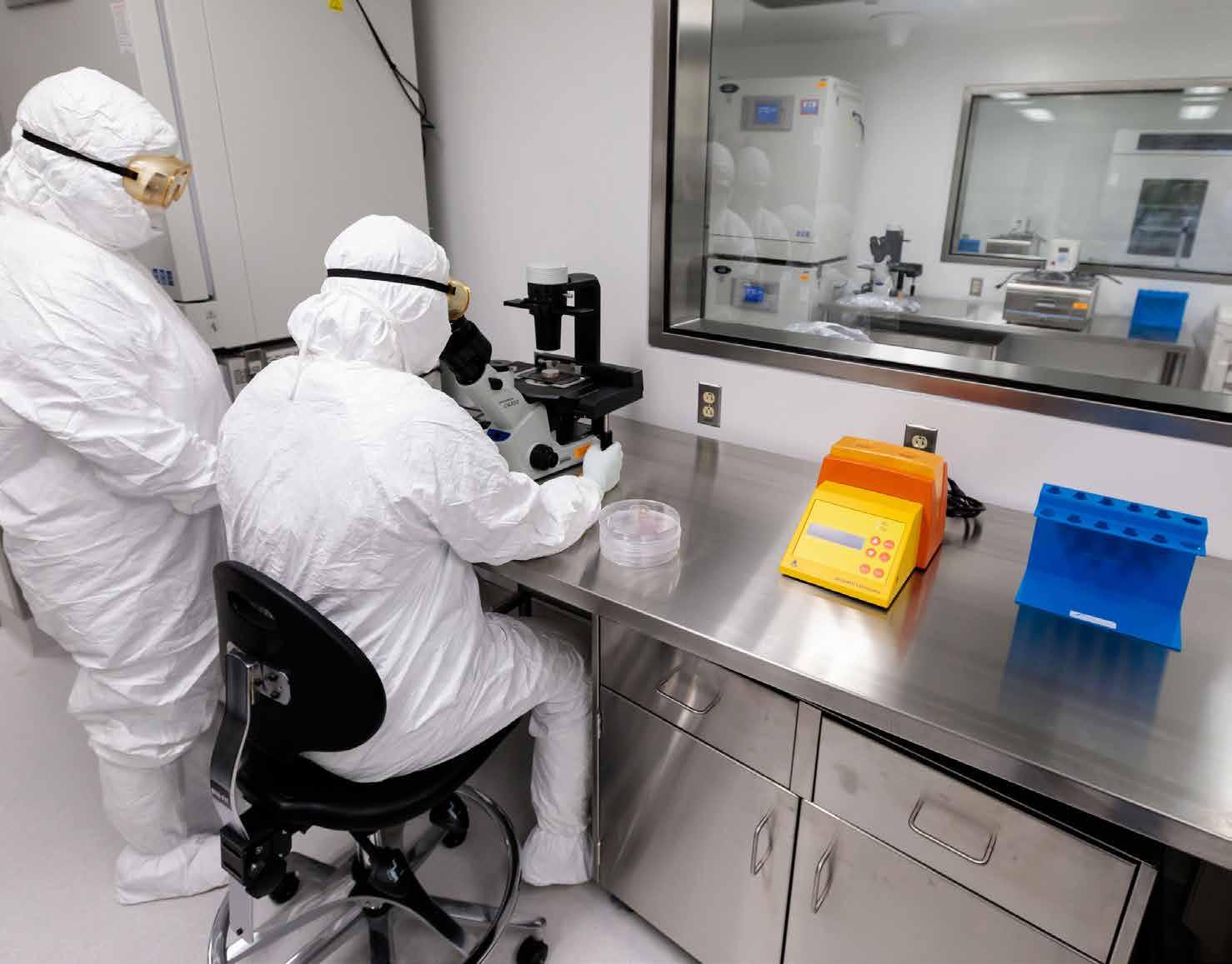
“The CIBMTR rankings are an objective measurement that reflects how dedicated our clinical staff is,” said LaBelle. “We expect the
number of children we can help to grow even more because of our recent partnership with the Chicagoland Children’s Health Alliance.” The CIBMTR report results now serve as a bench mark for future goals. Bishop is excited for what the future holds for survival rates as the field of cellular therapy moves forward. He said, “We will continuously challenge the status quo by leveraging the fantastic science that is occur ring at UChicago Medicine to bring patients the newest and most novel treatment options.”
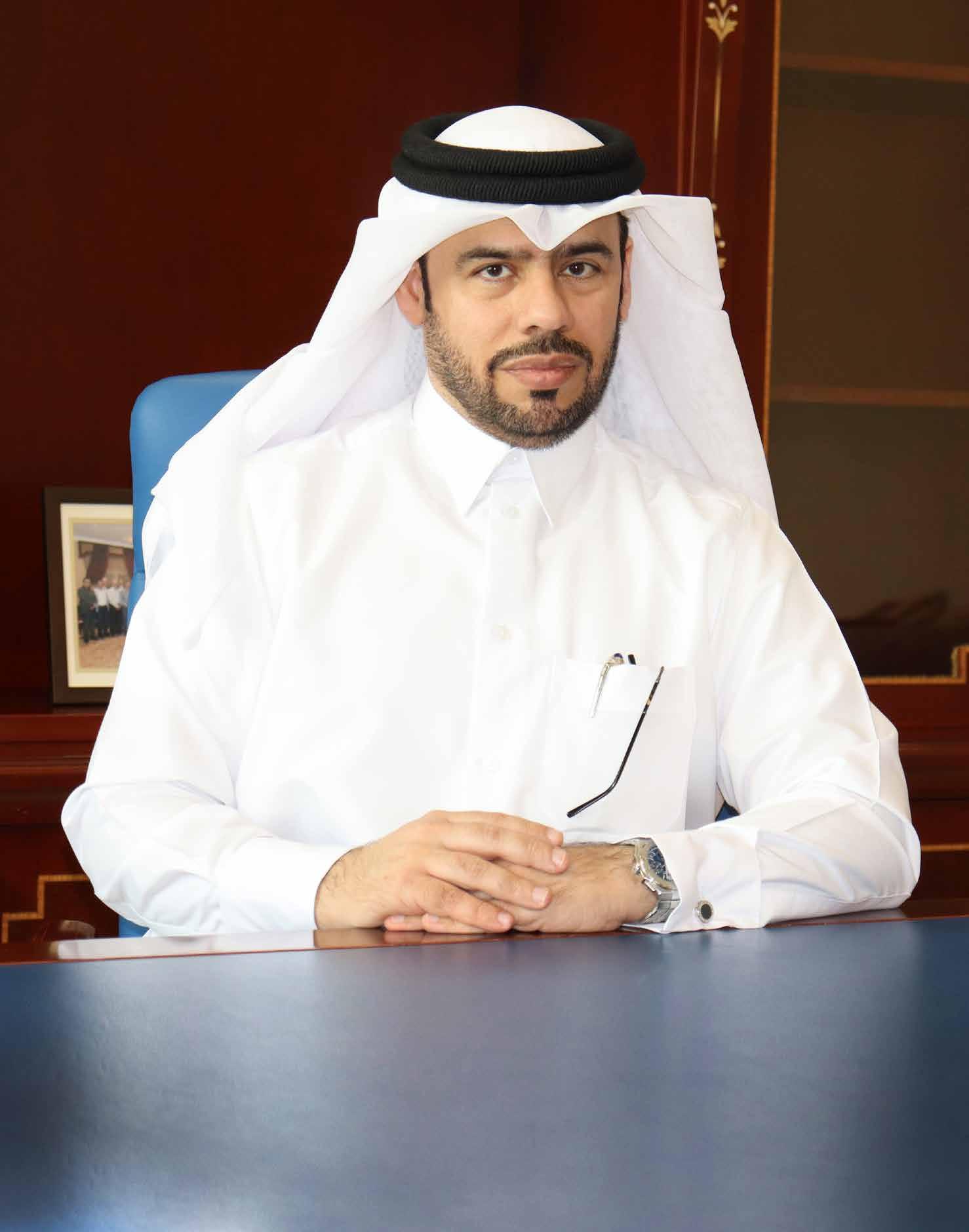
"Our main objective is to provide the best care for patients"
Mr. Khalid Al-Emadi
Al-Ahli Hospital is at the forefront of medical care in the private health sector in Qatar; its main objective is to continue to provide the best care for patients aligned with the National Health Strategy.“Hospitals” magazine met with Mr. Khalid Al-Emadi, CEO at Al-Ahli Hospital in an exclusive interview to shed light on the hospital’s improvements as well as its efforts to stay at the forefront of changing medical care.
The growth of investment in new healthcare facilities, services and technologies has transformed the health infrastructure in the country. What sets you apart from other medical institutions?
The basis of institutional success is team work, continuous perseverance and good strate gic planning.
Al-Ahli Hospital’s management team has always worked with these principles in mind and has continued to invest in the team and infra structure to place the hospital and the services we provide at the forefront of medical care in the private health sector.
It has not been easy as we faced many chal lenges in terms of logistics human resources and capabilities but everything is possible with good strategic planning.
Al-Ahli Hospital has a significant number of international doctors and consultants. How does this facilitate the flow of skills and knowledge into the country?
We, as a hospital, realized very early that the mixed skills of international and local doctors improve knowledge and thus services offered to our patients. Al-Ahli Hospital has always strived to attract world-class doctors and consultants with good work etiquette. In doing so, we have also listened to the international doctors and introduced the latest technology to constantly improve our services and keep abreast of mod ern health trends.
We developed and introduced an integrated electronic medical system for recording pa tients’ medical data, requesting investigations and other services and this has proved very efficient in providing a seamless service.
AL-AHLI HOSPITAL HAS SUCCESSFULLY OVERCOME ONE OF THE MOST DIFFICULT CHALLENGES, WHICH INCLUDE THE OBSTACLES CAUSED BY THE COVID-19 PANDEMIC SINCE THE FIRST CASE WAS RECORDED IN 2020.
Al-Ahli Hospital has successfully overcome one of the most difficult challenges, which in clude the obstacles caused by the Covid-19 pan demic since the first case was recorded in 2020. This global pandemic imposed a new reality on business management and we have embraced an unusual lifestyle pattern.
Therefore, since the beginning of the Covid-19 outbreak in the State of Qatar - we developed a precise institutional strategy to ad dress this virus. The Hospital management was keen to take all the necessary preventive mea sures with a planned strategy at all stages of the pandemic in order to ensure a safe environment for its employees and patients. A Covid-19 com mittee was formed at the onset of the virus and this comprised eleven staff and doctors working to direct the required measures. Entrance to the hospital was restricted to two places only where the medical staff were assigned to conduct daily checks on all the people entering the hospital premises. When infection was suspected, the individual was referred immediately to an isola tion room (dedicated to Covid) in the emergen cy room where the necessary and appropriate tests and medical care were undertaken. The emergency room and sections of the hospital wards were restructured to care for Covid-relat ed cases. These inpatients room were modified and fitted with negative pressure systems. In addition to reducing cross-infection, we intro duced infrared controls to all hospital elevators to avoid pressing any control buttons.
What are the Hospital’s main objectives looking ahead, and how are they aligned with the National Health Strategy?
The main objective of Al-Ahli Hospital going forward is to keep providing the best care for our patients in line with the National Health Strategy. As a hospital, we have allocated a sig nificant amount of our budget to improve and expand our premises and car parking facilities.
We are also working towards increasing our staff to cater to the various disciplines of medi cine and surgery. Therefore, we have to remain at the forefront of changing medical care.
Alzheimer's is a type of dementia that affects memory, thinking and behavior. It is a neurodegenerative disease, which means there is progressive brain cell death that happens over a course of time. The total brain size shrinks with Alzheimer's - the tissue has progressively fewer nerve cells and connections. Alzheimer's disease is caused by a combination of genetic, lifestyle and environmental factors that affect the brain over time.
Alzheimer's disease slowly destroys memory and thinking skills and, eventually, the ability to carry out the simplest tasks. Memory loss is the key symptom of Alzheimer's. Early signs include difficulty remembering recent events or con
versations. As the disease progresses, memory impairments worsen and other symptoms de velop. At first, a person with Alzheimer's disease may be aware of having difficulty remembering things and organizing thoughts.

Over time, Alzheimer's can lead to an inability to carry out daily activities, such as getting dressed, eating and taking care of himself. The patient needs com plete care during the advanced stages of the disease.
The damage most often starts in the region of the brain
How does the disease start and progress?
that controls memory, but the process begins years before the first symptoms. The loss of neurons spreads in a somewhat predictable pattern to other regions of the brains. By the late stage of the disease, the brain has shrunk significantly.
Researchers trying to understand the cause of Alzheimer's disease are focused on the role of two proteins: Beta-amyloid, which is a fragment of a larger protein. When these fragments clus ter together, they appear to have a toxic effect on neurons and to disrupt cell-to-cell communi cation. Whereas tau proteins play a part in a neu ron's internal support and transport system to carry nutrients and other essential materials. In Alzheimer's disease, tau proteins change shape and organize themselves into structures called neurofibrillary tangles. The tangles disrupt the transport system and are toxic to cells.
The Alzheimer’s patient mainly needs someone to be close to him, take care of him, without complaining, which is what the aware ness campaigns focus on; they seek to educate the community about the disease and how to provide support and assistance to those peo ple in order to improve their life by providing treatment and supportive devices in addition to offering support and advice to the patient’s family and to those who care for them.
All family members should everyone know some basic information about the disease and its development and how to take care of the patient at home to prevent the deterioration of his medical condition.
Here are some tips and advice for people living with Alzheimer's patients:
• The person who takes care of the patient on a daily basis must have some time to rest, otherwise they will not be able to carry out their assigned tasks alone. Rest is fundamental between daily tasks.
• Establish a daily schedule and routine for daily tasks such as bathing, medica tion, food and medical appointments.
• The person caring for the Alzheimer's patient should be aware that routine tasks will take longer than they used to.
• Teaching the patient to participate in chores as much as possible, such as getting dressed or making his bed.
• Be specific when asking the patient about something, because multiple options confuse him, for example, do you prefer coffee or tea.
• Avoid napping or sleeping during day time as this limits the patient's ability to sleep at night.
• When eating or talking with the patient, the surrounding factors that distract him, such as watching television or talking on the phone, should be minimized, in order to boost his concentration.
• You should provide the patient with a safe environment in order to avoid injuries and promote general safety at home. Wires, carpets or any clut ter must be removed, in addition to installing grab bars beside the toilet and in the shower. Closets containing toxic cleaning materials and dangerous tools must be locked.
Alzheimer’s
Dementia is a general term for loss of mem ory, language, problem-solving and other think ing abilities that are severe enough to interfere with daily life. Alzheimer's is the most common cause of dementia. There are types of dementia other than Alzheimer’s disease, such as vascular dementia, frontotemporal dementia, mixed dementia and dementia due to both Parkinson's disease and Huntington's disease. An important part of diagnosing Alzheimer's disease includes being able to explain your symptoms, as well as perspective from a close family member or friend about symptoms and their impact on daily life. Additionally, a diagnosis of Alzheimer's dis ease is based on tests your doctor administers to assess memory and thinking skills. Laboratory and imaging tests can rule out other potential causes or help the doctor better identify the disease causing dementia symptoms.
THE ALZHEIMER’S PATIENT MAINLY NEEDS SOMEONE TO BE CLOSE TO HIM, TAKE CARE OF HIM, WITHOUT COMPLAINING, WHICH IS WHAT THE AWARENESS CAMPAIGNS FOCUS ON; THEY SEEK TO EDUCATE THE COMMUNITY ABOUT THE DISEASE AND HOW TO PROVIDE SUPPORT AND ASSISTANCE TO THOSE PEOPLE IN ORDER TO IMPROVE THEIR LIFE BY PROVIDING TREATMENT AND SUPPORTIVE DEVICES IN ADDITION TO OFFERING SUPPORT AND ADVICE TO THE PATIENT’S FAMILY AND TO THOSE WHO CARE FOR THEM.
Early signs and symptoms of Alzheimer's disease can therefore be summarized as follows:
• Memory loss
• Trouble focusing and problem solving
• Inability to do simple things and daily chores
• Difficulty to remember times and places
• Changes in vision
• Poor judgment and decision-making
• Difficulty to think of common words during a conversation
• Mood changes such as depression
The early signs of the disease include for getting recent events or conversations. As the disease progresses, a person with Alzheimer's disease will develop severe memory impairment and lose the ability to carry out everyday tasks.

At this stage, the patient becomes anxious and nervous because of his inability to carry out daily tasks; Here comes the role of the family in providing him with psychological support, urging him to do things by himself, encouraging him to do so, and not blaming him if he makes a mistake so that he feels valued.
As the disease progresses, the person will need more help and, at some point, will need a lot of support with daily living. The patient will forget names and places, his short-term memory deteriorates, and may fail to recognize people. He will get upset quickly because he feels frus trated and loses his self-confidence.
Individuals lose track of where they are, the day of the week or the season. They may con fuse family members or close friends with one another or mistake strangers for family. They may wander, possibly in search of surround ings that feel more familiar. These difficulties make it unsafe to leave those in the moderate dementia stage on their own. An upset in the internal body clock will cause a biological mix-up between day and night in patients with Alzhei mer’s. Visual hallucinations are also common in patients with Alzheimer’s.
In the late stage of the disease, mental function continues to decline, and the disease has a growing impact on movement and physical capabilities. People generally lose the ability to communicate coherently, the patient can no lon ger converse or speak in ways that make sense, although he or she may occasionally say words or phrases. Require daily assistance with personal care, this includes total assistance with eating, dressing, using the bathroom and all other daily self-care tasks. The patient will experience a de cline in physical abilities, he will become unable to walk without assistance, then unable to sit or hold up his or her head without support. Muscles may become rigid and reflexes abnormal. Even tually, a person loses the ability to swallow and to control bladder and bowel functions.
Exercise has many known benefits for both physical and mental health, including reducing the risk of cardiovascular disease and diabetes, strengthening the bones and muscles, and re ducing stress. It also appears that regular physi cal activity benefits the brain. Studies show that people who are physically active are less likely to experience a decline in their mental function and have a lowered risk of developing Alzhei mer's disease.
Physical activity is one of the known mod ifiable risk factors for dementia. Plus, regular exercise helps combat other Alzheimer's disease risk factors, such as depression and obesity.
THE EARLY SIGNS OF THE DISEASE INCLUDE FORGETTING RECENT EVENTS OR CONVERSATIONS. AS THE DISEASE PROGRESSES, A PERSON WITH ALZHEIMER'S DISEASE WILL DEVELOP SEVERE MEMORY IMPAIRMENT AND LOSE THE ABILITY TO CARRY OUT EVERYDAY TASKS.
There is a close association between obesity and the risk of Alzheimer's disease, with one study showing that people with a BMI of 30 or more had a 31% risk of developing dementia.
People with type 2 diabetes have an in creased risk of developing Alzheimer's disease. Certain lifestyle choices, such as physical activity and diet, may help support brain health and prevent Alzheimer's. Many of these lifestyle changes have been shown to lower the risk of other diseases, like heart disease and diabetes, which have been linked to Alzheimer's.

In Alzheimer's patients, there is a lack of in sulin signals in the brain, which leads to a loss of energy in brain cells, and lead them to become without sufficient insulin signals. Hence, blood
sugar won’t be transferred to brain cells.
There is still no radical treatment for Alzhei mer's disease, however, there are some lifestyle changes that can control the symptoms as much as possible.
Some of the effective ways to prevent Alz heimer's disease include being fit as weight loss is one of the best natural ways to prevent it, as a study has shown that obesity and overweight may lead to Alzheimer's disease with age. Eating healthy foods rich in nutrients and minerals, especially foods containing omega-3 fatty acids, helps keep your brain cells healthy.
Much of Alzheimer’s risk is related to nutri tion and lifestyle factors that can be changed. Given that it is an irreversible condition, the best hope is prevention by encouraging positive diet and lifestyle changes that can impact cogni tive function.
STUDIES SHOW THAT PEOPLE WHO ARE PHYSICALLY ACTIVE ARE LESS LIKELY TO EXPERIENCE A DECLINE IN THEIR MENTAL FUNCTION AND HAVE A LOWERED RISK OF DEVELOPING ALZHEIMER'S DISEASE.
Hospitals magazine had the chance to meet Professor Muthanna G. Abdul Raz zaq, President and CEO of The American University in the Emirates (AUE) who shed light on the main achievements and lessons learned from the coronavirus pandemic after life re turned to normal this year.

What are the lessons learned from this pandemic? How would you assess your experience?
The pandemic has had long-term effects on the entire world, but the key was to see the
silver lining. However, such crisis also drives op portunities which can lead to accelerated inno vation. The American University in the Emirates (AUE) has been taking precautionary measures in order to prevent the spread of Covid-19 and has played an effective role in UAE’s “Stay Home Stay Safe” campaign. Traditionally, American University in the Emirates (AUE) only offered in-person classes in its main ≠≠c beginning in March 2020, all classes were moved online and have remained in that format throughout Fall 2020 and Spring 2021, significantly changing the educational environment for students, faculty,
President and CEO of The American University in the Emirates (AUE)
"AUE has found the opportunity of rising to the challenge in a timely manner"
Professor Muthanna G. Abdul Razzaq
AGILITY IS THE KEY TO DRIVING CREATIVITY. HENCE REMOTE TEACHREADY MICROCREDENTIALS WERE INTRODUCED FOR FACULTY MEMBERS EMULATING BEST PRACTICES.
staff, and other stakeholders. It made us (Faculty Members, Students and Stakeholders) quickly move out of the comfort zone.
During the “adjustment phase” the “adop tion” happened, and the Role of Digital Transfor mation was witnessed at large. It was realized that universities will become “a service” in the future hence sustainable, innovative, and smart solutions are required.
What have you accomplished in this regard?
In the wake of such a pandemic, we as AUE found the opportunity of rising to the challenge in a timely manner and taking the distant learn ing ahead while ensuring that “Education Never Stops”!!

• The Effective Paradigm Shift;
• AUE created a Transition and Resilience Management Task Force which specifi cally investigated the following areas;
• Assessment Design & Delivery
• Online Final Exam
• Student Engagement & Welfare
• Technical Support
What are the gaps that were discovered? How did you handle them during 2022?
One of the key takeaways was to discov er how to pivot in this new frontier in Higher Education. New era, new normal, going forward will be all about technology. Therefore, rethink ing the models of assessment and reapplying the way we do things became the need of the hour. Is the infrastructure scalable? The future is hybrid. Adapting to change – Robustness! From all stakeholders.
Agility is the key to driving creativity. Hence, remote teach-ready micro-credentials were introduced for Faculty Members emulat ing best practices.
AUE went completely digital with no ex change of papers between students, staff, and faculty. A work-from-home strategy was created while ensuring engagement from all stakehold ers. FAQs for Online Exams were created, and such practices were benchmarked. Close mon itoring of the Final Exams using FelxiQuiz and
AUE WENT COMPLETELY DIGITAL WITH NO EXCHANGE OF PAPERS BETWEEN STUDENTS, STAFF, AND FACULTY. A WORK-FROMHOME STRATEGY WAS CREATED WHILE ENSURING ENGAGEMENT FROM ALL STAKEHOLDERS. FAQS FOR ONLINE EXAMS WERE CREATED, AND SUCH PRACTICES WERE BENCHMARKED. CLOSE MONITORING OF THE FINAL EXAMS USING FELXIQUIZ AND RESPONDUS MONITOR AND RESPONDUS LOCKDOWN SOFTWARE FOR MAINTAINING INTEGRITY, RIGOR & TRANSPARENCY.
Respondus Monitor and Respondus Lockdown Software for maintaining integrity, rigor and transparency. Best practices in online teaching and assessment delivery were benchmarked and each college created an online teaching strategy customized as per the offerings of the courses.
What are the new procedures that have been adopted?
• The Office of Student Life & Community Engagement at AUE organized and is continuously hosting Instagram Live programs for Students titled "C3: Con necting to Combat Corona"
• Creating awareness is the Key! AUE hosted all these live programs for students by engaging the Industry Professionals. The Office of Counsel ing & Disability at AUE has also been actively engaged in creating such awareness sessions for AUE students and the Public.
We would like to highlight the main future expansion plans and projects in order to keep pace with health sector developments.
• A transformational job market has emerged; hence, switching the model is required.
• All hard skills are around technology.
• Focusing on healthcare management and to offer a Master's degree in health care management and quality manage ment hence, aligning with the MOHAP and UAE Centennial Vision of 2071.
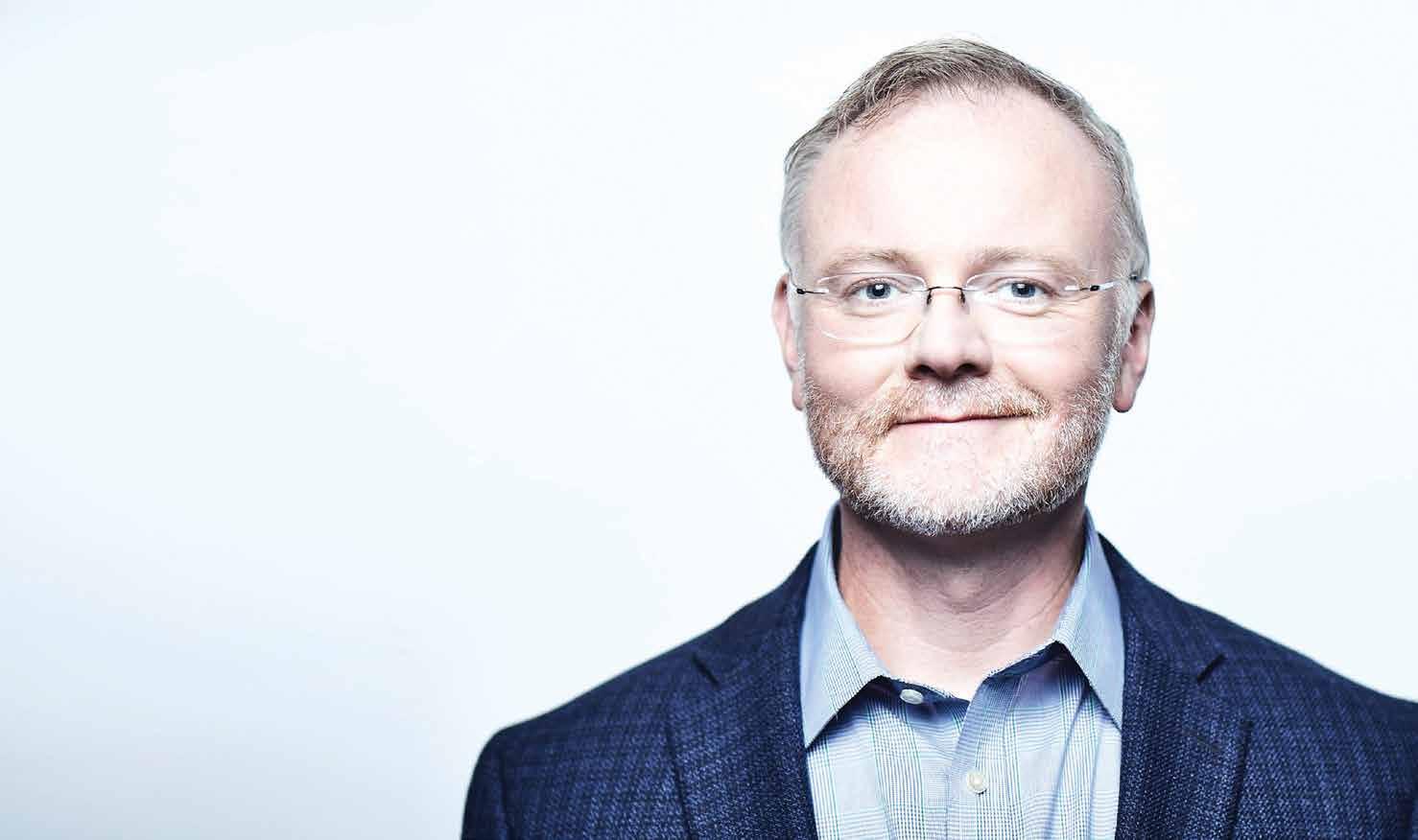
Gavin A. Cloherty, Ph.D., Head of Infec tious Disease Research and the Pan demic Defense Coalition for Abbott’s diagnostics business, provides scientific leadership in the area of infectious disease diagnostics by conducting groundbreaking clinical studies and developing new diagnostic tests. As one of the top experts in the field, his pioneering research is changing the way infec tious diseases are being diagnosed to help im prove patient outcomes. “Hospitals” magazine met with him to talk about the Abbott Pan demic Defense Coalition, its role in addressing future threats and preventing future pandem ics, among other important issues. Below is the full interview:
The Abbott Pandemic Defense Coalition was launched two years ago; can you please explain the reasons behind this coalition and its specific role?
The Abbott Pandemic Defense Coalition is a first-of-its-kind industry-led global scientific and public health partnership dedicated to the early detection of, and rapid response to, future pan
THE ABBOTT PANDEMIC DEFENSE COALITION IS A FIRST-OF-ITS-KIND INDUSTRY-LED GLOBAL SCIENTIFIC AND PUBLIC HEALTH PARTNERSHIP DEDICATED TO THE EARLY DETECTION OF, AND RAPID RESPONSE TO, FUTURE PANDEMIC THREATS.
demic threats. The coalition is a global network of ‘eyes on the ground’ – always looking for new pathogens and analyzing how known viruses are changing to help the global health community stay one step ahead. Abbott has spent nearly 30 years hunting viruses and invented the first HIV test 35 years ago. We’re experts in viral surveil lance and know how to design, scale, and deliver diagnostic tools globally. For global health security, we need virus hunters in every corner of the world armed with the latest training and technology, which is what Abbott hopes to ulti mately provide.
Who are the key players or participants in this coalition? And who orchestrates the cooperation between them?
When we set out to build the Abbott Pandemic Defense Coalition, we intentionally focused on partnering with centers of excellence to support our global disease surveillance pro gram. The Coalition has 15 scientific, academic and public health organizations on five different continents – we’re actively hunting, discovering and researching new and known threats around
“Global collaboration is needed more than ever to help us prepare for and prevent future viral threats."
the world. Coalition partners contribute with ex pertise in infectious diseases, laboratory testing, genetic sequencing, epidemiology, and diagnos tics to advance the goals of the network. Abbott serves as the key connector, but it’s a collabora tion among all partners. The program will evolve over time, and we’ll continue to expand into different geographies and add partners where and when it makes sense.
How do you see the Coalition play a role in preventing or addressing future threats and preventing future pandemics?
Fighting pandemics is a team sport. Global collaboration is needed more than ever to help us prepare for and prevent future viral threats. The quicker a virus can be found and sequenced, the quicker it can be shared and tested to see if it’s a known or unknown pathogen – in doing so, we can ensure diagnostic tests detect it and vaccines and therapeutics aren’t impacted.
We’re learning more about mutations and what combination of mutations can evolve into variants of concern and which ones fizzle out. In the case of Omicron, Abbott’s collaboration with our partner in South Africa quickly alerted us to the threat and enabled us to analyze the viral sequences and confirm our diagnostic tests could detect it for the hospitals, doctors and consumers using our tests.
It’s possible the Coalition could identify the next pandemic threat. If someone presents with an unknown illness, the samples can be sequenced and shared. If more cases are seen, we can raise an alarm to prevent threats from reaching pandemic levels.

There are conflicting opinions whether COVID-19 is almost behind us even though we are still discovering new variants or a change in a variant now and then; do you think it can still pose serious threats. What’s your stance on the matter?
COVID is not over. Many people have moved on from the emergency phase of the pandem ic, but the virus hasn’t moved on. It’s still here. COVID will likely become seasonal and ultimately endemic, and testing will continue to be a critical
FIGHTING PANDEMICS IS A TEAM SPORT. GLOBAL COLLABORATION IS NEEDED MORE THAN EVER TO HELP US PREPARE FOR AND PREVENT FUTURE VIRAL THREATS. THE QUICKER A VIRUS CAN BE FOUND AND SEQUENCED, THE QUICKER IT CAN BE SHARED AND TESTED TO SEE IF IT’S A KNOWN OR UNKNOWN PATHOGEN – IN DOING SO, WE CAN ENSURE DIAGNOSTIC TESTS DETECT IT AND VACCINES AND THERAPEUTICS AREN’T IMPACTED.
tool together with vaccines. As part of our global surveillance program, Abbott continually monitors COVID-19 mutations so we can ensure our diagnostic tests can detect them and that health professionals and consumers can use them with confidence. We use monitoring, sam pling, sequencing and data collection on a global scale to stay one step ahead of the virus.
The northern hemisphere is in the middle of the flu season which, compared to COVID-19, was never considered a major threat to the population. How do you evaluate the threat of flu onto the world population, particularly in the Middle East; and what do you think about the spike of flu cases worldwide this year after we witnessed a decrease in Covid-19 cases?
We partner with the Global Influenza Hos pital Surveillance Network and closely monitor the flu reporting trends and also take insights from markets like Australia that provide an early look into what to expect for the northern hemisphere. As COVID-19 continues to circulate, we must be more prepared than ever in regions of the world heading into traditional flu/respi ratory season. With multiple respiratory viruses circulating, it’s no longer effective to make a presumptive diagnosis based on symptoms
alone. COVID-19 and influenza are difficult to dif ferentiate due to similar symptoms such as fever, cough, shortness of breath and more. That’s why we are delivering innovative rapid diagnostics like ID NOW, a molecular point-of-care platform, that delivers fast, accurate testing for COVID-19, Influenza A & B, Strep A and RSV, to help health professionals and hospitals detect respiratory viruses quickly and provide effective treatment.
Rapid testing is the only way we can confi dently diagnose and treat to help protect pa tients and our communities. Access to immedi ate, reliable information guides better decisions and allows health professionals whether in the hospital or at a clinic to diagnose faster and treat faster.
The Middle East region is hosting large scale sports events this month, in addition to the large number of tourists who are expected to flock in to enjoy the good winter weather. How can healthcare authorities equip themselves
RAPID TESTING IS THE ONLY WAY WE CAN CONFIDENTLY DIAGNOSE AND TREAT TO HELP PROTECT PATIENTS AND OUR COMMUNITIES. ACCESS TO IMMEDIATE, RELIABLE INFORMATION GUIDES BETTER DECISIONS AND ALLOWS HEALTH PROFESSIONALS WHETHER IN THE HOSPITAL OR AT A CLINIC TO DIAGNOSE FASTER AND TREAT FASTER.
to face an incremental number of visitors and mitigate the potential spread of viruses, especially COVID and flu?
We know that travel and large gatherings are drivers for spread of viruses. Getting pre pared for increases of respiratory cases is critical. Being ready with rapid testing tools and treat ments so that patients can be effectively tested and diagnosed during a visit will help prevent further spread of viruses.
Further, encouraging the public to stay up to date with vaccinations for flu and COVID-19 and taking precautions such as masking- especially if you have risk factors or had a recent exposure, handwashing and staying home if ill are mea sures that should be practiced as well.
With the availability of self tests, it’s easier than ever for consumers to pick up a Panbio COVID-19 Antigen Self-Test, to help rule in or rule out an active COVID-19 infection.
Diagnostics and screening for COVID has obviously played a critical role
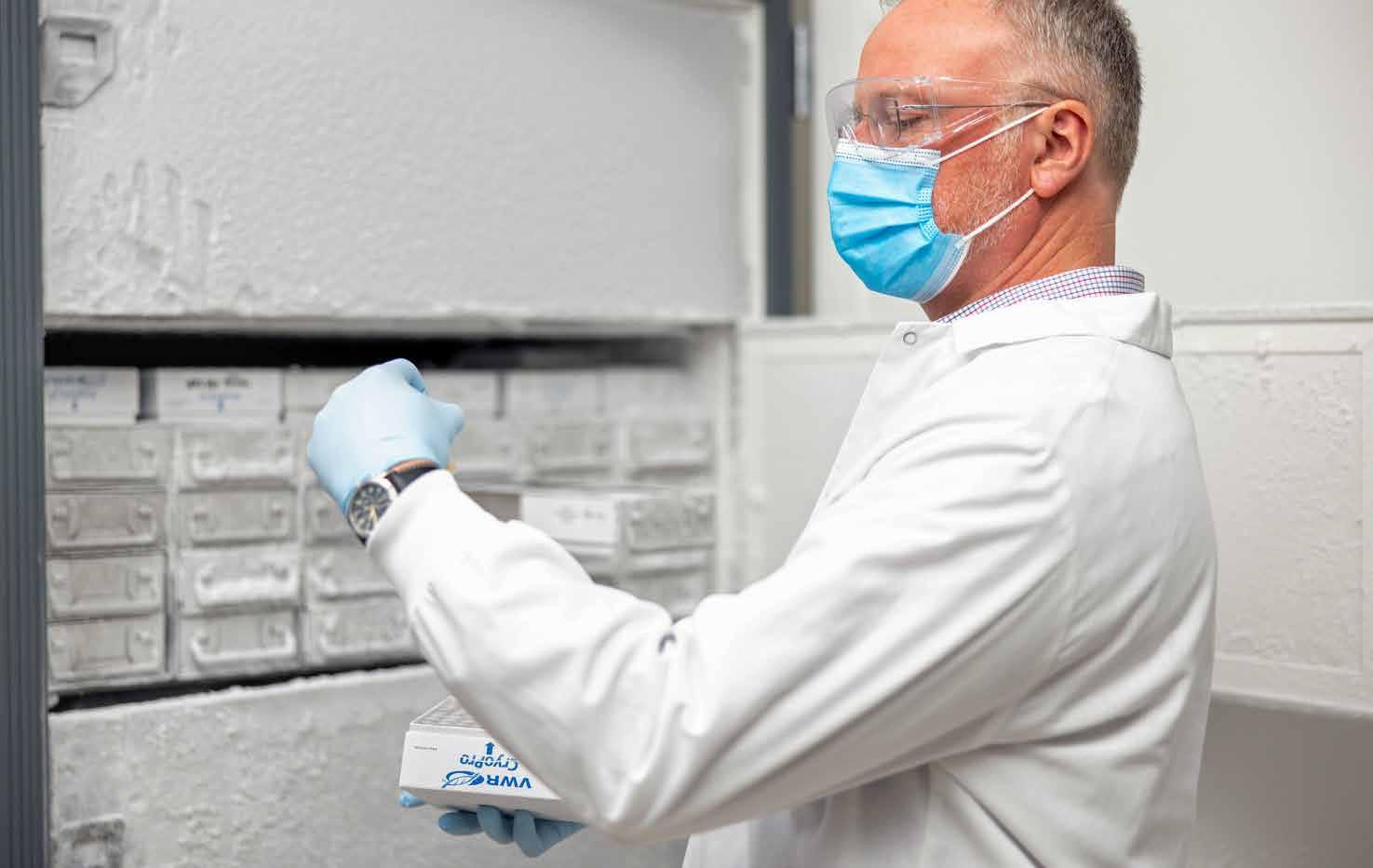
during the pandemic; how do you see testing play a similar role in future health threats or pandemics?
The future of rapid testing couldn’t be more important. The future lies in the decentralization, digitalization and democratization of testing. Making tests easier to use and easier to access to reach more people in more places.
Throughout COVID-19, Abbott delivered fast, reliable, molecular and rapid antigen testing solutions —including self-testing, and illustrated the benefit of decentralized tech nologies at the point of care, and how they can help improve access and empower health professionals and people with important, timely health information.
An adequate and well-distributed diagnostics are key to battling disease outbreaks especially in low income to middle income countries where we see a large diagnostic delay; how do you plan to correct this gap in future pandemics?
Abbott’s Pandemic Defense Coalition is unique because we have the ability to rapidly de velop diagnostic testing when a new viral threat is discovered. Backed by our global manufactur ing network, we can produce and deliver much needed tests across the world, as we did with COVID-19. The key is activating and coordinat ing local government and regulatory agencies as part of an early response to ease the way for important diagnostic tools.
Any particular virus or pathogens you dread the most? And are you cooperating with the WHO regarding this matter? Which region causes you more worries with regard to a potential pandemic?
COVID-19 taught us that a viral threat somewhere is a viral threat everywhere. We saw the same with the fast spread of monkeypox this year to 90+ non-endemic countries.
We have to raise disease surveillance capabil ities to strengthen pandemic defenses univer sally across the world. Our Abbott Pandemic Defense Coalition is uniting many sites in lowand middle-income countries to our network to collaborate, share and learn to strengthen pandemic defenses and sharpen response locally
ABBOTT’S PANDEMIC DEFENSE COALITION IS UNIQUE BECAUSE WE HAVE THE ABILITY TO RAPIDLY DEVELOP DIAGNOSTIC TESTING WHEN A NEW VIRAL THREAT IS DISCOVERED. BACKED BY OUR GLOBAL MANUFACTURING NETWORK, WE CAN PRODUCE AND DELIVER MUCH NEEDED TESTS ACROSS THE WORLD, AS WE DID WITH COVID-19.
in these areas. As part of our work, we share information with researchers, local governments and global health authorities such as the WHO in real-time, to help ensure everyone is collaborat ing to identify threats and quickly act.
Is Monkeypox under control at the moment? Could it erupt uncontrollably?
Viruses are unpredictable; however, it appears monkeypox cases are continuing to tend downward. The important thing is to con tinue to monitor the outbreak and evolution of the variants to make sure we are prepared for any changes.
What are the chances the world could face another pandemic? Are governments more equipped to handle it better and are they more willing to cooperate among themselves to fight any future pandemic? Was Coronavirus a lesson well learned?
Ongoing global surveillance is key to pre venting the next pandemic. COVID-19 made it painfully clear no one country or organization can do it alone. Today, there are more than 200 species of viruses that can infect humans. With so many to monitor, we need to build the next generation of virus hunters and train them in cutting-edge sequencing, bioinformatics, and other technologies. The good news is Abbott is investing in fellowships around the world that enable real-world lab and field training in viral discovery, sequencing epidemiology and more.
We are in talks with governments around the world to understand how we can best sup port national and local viral threat identification and response efforts. As part of this program, we will share information with researchers, local governments and global health to ensure everyone is collaborating to identify threats and quickly act.
In order to continue to be prepared and de tect potential threats, we need to continue our global collaboration across industries, which will be an ongoing job. COVID-19 showed the impor tance of pandemic preparedness and the need for strong infrastructure, and we will continue to maintain the guardrails established as part of our coalition partnerships.
Acataract is a clouding of the normally clear lens of the eye. Most cataracts are age-related; they happen because of normal changes in your eyes as you get older. Most cataracts develop slowly and don't disturb your eyesight early on. But with time, cataracts will eventually interfere with your vision. As the cataract continues to develop, the clouding becomes denser. A cataract scatters and blocks the light as it passes through the lens, prevent ing a sharply defined image from reaching your retina. As a result, your vision becomes blurred. Cataracts can affect your color vision, making some hues look faded. Your vision may gradually take on a brownish or yellowish tinge.
include:
• Clouded, blurred or dim vision
• Increasing difficulty with vision at night
• Sensitivity to light and glare
MOST CATARACTS DEVELOP WHEN AGING OR INJURY CHANGES THE TISSUE THAT MAKES UP THE EYE'S LENS. PROTEINS AND FIBERS IN THE LENS BEGIN TO BREAK DOWN, CAUSING VISION TO BECOME HAZY OR CLOUDY.
• Need for brighter light for reading and other activities
• Seeing “halos” around lights
• Frequent changes in eyeglass or contact lens prescription
• Fading or yellowing of colors
• Double vision in a single eye
Most cataracts develop when aging or injury changes the tissue that makes up the eye's lens. Proteins and fibers in the lens begin to break down, causing vision to become hazy or cloudy.
Some inherited genetic disorders that cause other health problems can increase your risk of cataracts. Cataracts can also be caused by other eye conditions, past eye surgery or medical conditions such as diabetes.

A cataract is a cloudy lens. The lens is posi
tioned behind the colored part of your eye (iris). The lens focuses light that passes into your eye, producing clear, sharp images on the retina — the light-sensitive membrane in the eye that functions like the film in a camera.
As you age, the lenses in your eyes be come less flexible, less transparent and thicker. Age-related and other medical conditions cause proteins and fibers within the lenses to break down and clump together, clouding the lenses.
As the cataract continues to develop, the clouding becomes denser. A cataract scatters and blocks the light as it passes through the lens, preventing a sharply defined image from reaching your retina. As a result, your vision becomes blurred.
Cataracts generally develop in both eyes, but not always at the same rate. The cataract in one eye may be more advanced than the other, causing a difference in vision between eyes.
At first, stronger lighting and eyeglasses can help you deal with cataracts. But if impaired vision interferes with your usual activities, you might need cataract surgery. Fortunately, cataract surgery is generally a safe, effective procedure. It involves replacing the cloudy lens inside your eye with an artificial one. The artifi cial lens, called an intraocular lens, is positioned in the same place as your natural lens. It remains a permanent part of your eye.
Cataract surgery usually takes around 30 minutes and is generally done on an outpatient basis, which means you won't need to stay in a hospital after the surgery. During cataract sur gery, your eye doctor uses a local anesthetic to numb the area around your eye, but you usually stay awake during the procedure.

After the procedure, you'll have some dis comfort for a few days. Healing generally occurs within a few weeks. Before you leave hospital, you'll be given some eye drops to help your eye heal and prevent infection. It's important to use your eye drops as instructed by your doctor.
Prevention is possible by following some steps, including protecting the eyes from the sun and wearing prescription glasses or sun glasses that offer UV protection. If the patient
is taking medicines that contain corticosteroids, he should inform the doctor so he can replace the medicine with another one. If the patient has diabetes, he should maintain a healthy blood sugar level.
Eating foods rich in antioxidants, like lutein, carotenoids and vitamins A, C, and E, can help protect your cells from damage. Even if you have cataracts, these nutrients slow down cataracts’ growth. Cigarette smoke produces free radicals that harm your eyes, reducing the number of antioxidants in your body. These toxins accumulate and can cause cataracts. Therefore, quitting smoking is fundamental to preventing cataract. The key to preventing cataract blindness is to have regular eye exams. An eye examination can help your optometrist detect cataracts at earlier stages. They can then help you monitor the condition and potentially slow its progression.
PREVENTION IS POSSIBLE BY FOLLOWING SOME STEPS, INCLUDING PROTECTING THE EYES FROM THE SUN AND WEARING PRESCRIPTION GLASSES OR SUNGLASSES THAT OFFER UV PROTECTION.
WCM-Q recognizes 53 high-achieving foundation and pre-medical students
The Weill Cornell Medicine-Qatar (WCM-Q) Dean’s Honor List recognized the academic performance of 53 high-achieving founda tion and pre-medical students during a cere mony. The list included students who received a grade point average of 3.75 or higher during the Fall or Spring Semester of the 2021—22 Academic Year. An impressive 30 students scored a double victory by securing a spot on the list during both semesters.

Speaking at the ceremony, Dr. Javaid Sheikh, Dean of WCM-Q, said: “I would like to congratulate every student who has secured a well-deserved place on the Dean’s Honor List. This is not an easy accomplishment. It takes excellence and commitment to be named as a high-achiever, qualities which these students
have all clearly demonstrated, without question. Congratulations once again.”
Dr. Sean Holroyd, Associate Dean for Stu dent Affairs at WCM-Q, said: "It is wonderful to have so many students here today celebrating their successful year with their colleagues and families. To have a place on the Dean’s Honor List represents a commitment and dedication to the study of medicine. These students have laid themselves a strong foundation on which they can further build their knowledge as their medical studies progress. Well done!"
One of the awarded pre-medical students from the Class of 2026, Aisha Al-Mulla, said: “To excel academically, I have worked hard and over come numerous challenges. I’m therefore over
joyed to have this acknowledgment. We, medical students, have a lot to achieve; the Dean’s list marks the beginning of many accomplishments. Without the help of my family, I would not have had this opportunity, and I am really grateful for that. I also want to express my gratitude to the WCM-Q instructors for their support and guid ance over the years.”
WCM-Q alumnus Dr. Mohammed Al-Hijji, Class of 2011, now a Consultant in Intervention al and Structural Cardiology at Hamad Medical Corporation’s Heart Hospital, gave the keynote speech at the ceremony, saying: “‘The best preparation for tomorrow is to do today’s work superbly well.’ I think this group of high achiev ers exemplified this saying by Sir William Osler. Congratulations to you, your family, friends, and mentors for this academic achievement and success. You are here tonight because of your perseverance and self-discipline to achieve outstanding work. You are here tonight because you have woken up every day at Weill Cornell to set an example as future leaders.”

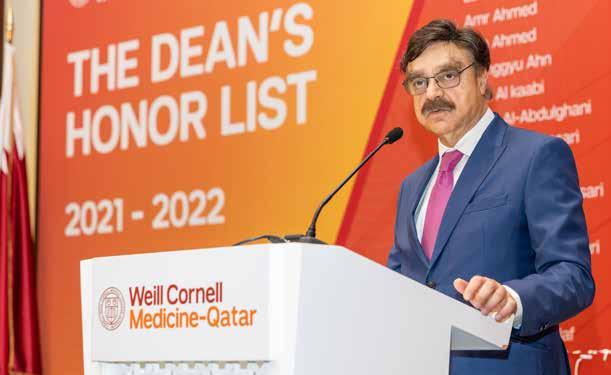
DEAN’S HONOR LIST 2021-22

Lolwa Al-Abdulghani, Abdulaziz Alansari, Yaqoub Al-Jaidah, Sara Al Kaabi, Maha Almarri, Sama Ayoub, Shahad Ibrahim, Jane Manyama.
Leena Aboidris, Amr Ahmed, Lina Ahmed,
Younggyu Ahn, Ahmad Al-Ansari, Mohammed Al-Ansari, Nafla Al-Attiyah, Mohammed Al-Bishri, Maryam Al-Hamadi, Sumaya Hussein Ali, AlDana Al-Khalaf, Haya Al-Kuwari, Nawaf Al-Muhannadi, Aisha Al-Mulla, Fatima Almusleh, Amal AlNae mi, Yousef Al-Najjar, Noor Al-Sayegh, Manar Al-Shukri, Kareem Aly, Sushanthi Anandaraja, Maryam Arabi, Sarah Baig, Azwa Dilawar, Anam Ehtesham, Ahmed El-Naas, Kareem Fanous, Omar Hamad, Raghad Ibrahim, Nour Jaouni, Yazan Kaddorah, Aisha Kafoud, Ibtihal Kamal, Mohammed Keshaish, Surin Lee, Anns Mahboob, Hana Nishan, Aqib Abdul Rahman, Zoya Salahud din, Aparajita Sarkar, Shaunak Sarker, Degiri Ka lana Senevirathne, Leena Syed, Sanish Varghese, Mahmoud Yousef.
Dr. Javaid Sheikh, Dean of WCM-Q, and Aisha Al-Mulla, a pre-medical student who secured a spot on the Dean’s Honor List Dr. Javaid Sheikh, Dean of WCM-Q, during the Dean’s Honor List ceremonyThe Health Sciences Library and Division of Continuing Professional Development (CPD) at Weill Cornell Medicine-Qatar (WCM-Q) held a two-day course to investigate how the art of communicating science impacts public engagement with health messages at both the individual and population levels.
Titled ‘Leveraging Science Communication Tools to Craft Effective Health Messages,’ the course was directed by Jamie Gray, Associate Librarian and Director of Health Sciences Library at WCM-Q, and was attended by allied health professionals, dentists, educators, nurses, phar macists, health communicators and physicians.
The course faculty included Dr. Javaid Sheikh, Dean of WCM-Q, Dr. Maya Adam, Direc tor of Health Media Innovation and Clinical Assis tant Professor in the Department of Pediatrics
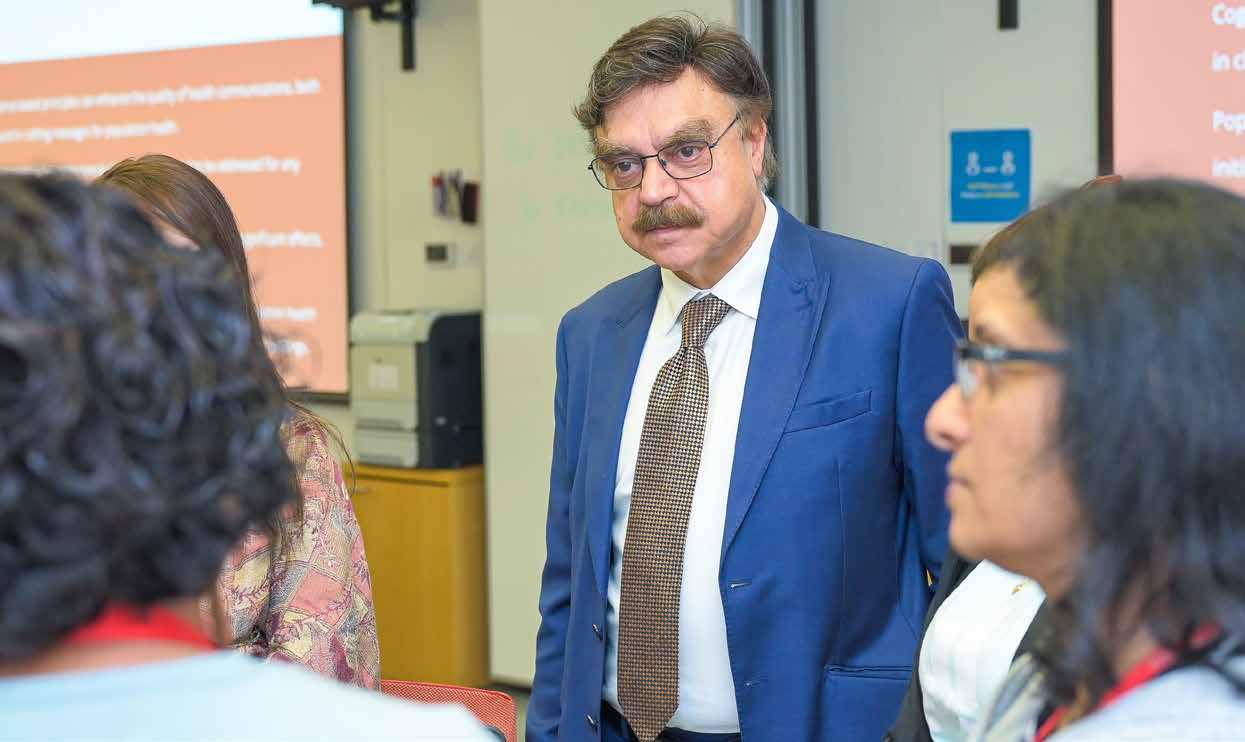
at Stanford School of Medicine, Dr. Ross Mac Donald, Librarian of Scholarly Communications at WCM-Q, and Sinéad O'Rourke, Engagement Manager at WCM-Q.
Participants explored the basic principles of science communication, how science and health literacy impacts health behaviors and understanding of scientific evidence, the effects of misinformation and why it can be so tricky to combat, and how to effectively create evi dence-informed health messages for different audiences and platforms.
In addition, the course also explored how the scientific process, human cognition, and various social factors contribute to the public’s willingness to engage in scientific discussions.
The objectives of the course were to define scientific communication, how it is impacted
TITLED ‘LEVERAGING SCIENCE COMMUNICATION TOOLS TO CRAFT EFFECTIVE HEALTH MESSAGES,’ THE COURSE WAS DIRECTED BY JAMIE GRAY, ASSOCIATE LIBRARIAN AND DIRECTOR OF HEALTH SCIENCES LIBRARY AT WCM-Q.
by science and health literacy, and where it can go wrong; how cognitive processes influence the ways in which information is received and internalized; techniques for developing and testing messages for different audiences; and how to create an online communication proposal tailored to a particular audience.
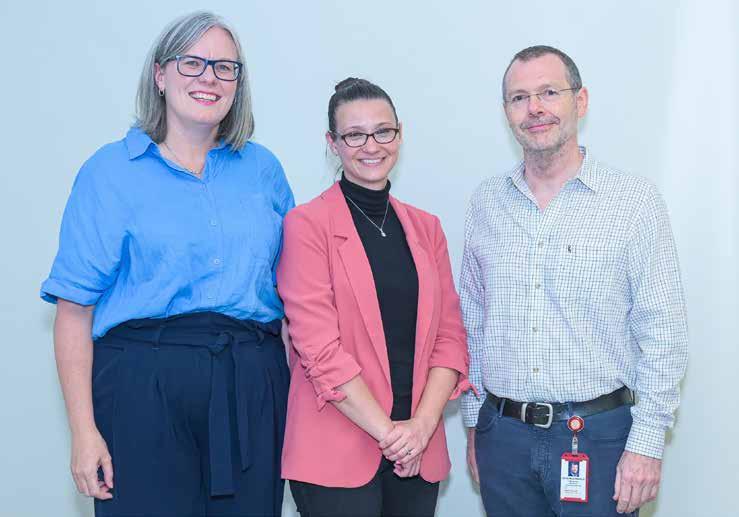
Summarizing her approach to health com munication, Dr. Maya Adam, said: “Effective health education needs to be accessible across cultures, languages, and education and literacy levels. Storytelling is a universal language that we can use to engage diverse audiences, com municate critical information, and help audiences retain what they have learned. Our responsibility – as scientists and healthcare providers – is to translate evidence-based health recommenda tions into formats that will reach people where they are. This means delivering accessible health media on the platforms where people seek infor mation and delivering it in ways that appeal and make sense to them.”
Ms. Jamie Gray, said: “As the health infor mation ecosystem evolves, it’s imperative that we think about the system holistically. Exploring scholarly, science and health communication as a continuum and how those domains intersect when it comes to our health decision-making is vital to finding the best avenues for empow ering individuals and communities in their own wellbeing journeys. Information is power. But that information needs to be shared in a way that is meaningful and useful to people in their everyday lives.”
Dr. Javaid Sheikh, said: “As a medical education and research institution, there is an important scientific education element that we must always take into consideration as part of our overall role and responsibility. By effec tively raising awareness and understanding of science-related topics, we are able to encourage science literacy and subsequently positively impact health behavior and engagement on an individual and community level.”
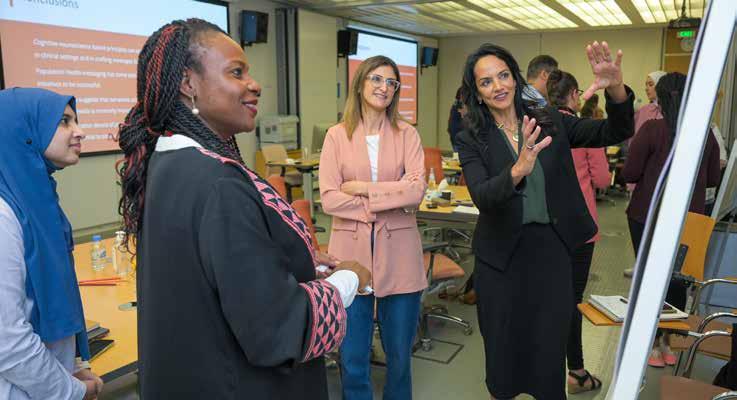
Dr. Thurayya Arayssi, Vice Dean for Academ ic and Curricular Affairs, said: “We are committed
to offering healthcare professionals an abun dance of opportunities for continuing medical education and professional development. Our truly diverse range of workshops therefore not only touch on relevant medical education and re search elements but also extend to other areas that positively contribute to the important work we do at WCM-Q.”
In Qatar, WCM-Q is accredited as a provider of continuing medical education by the Depart ment of Healthcare Professions (DHP) of the Ministry of Public Health (MOPH) and is accred ited internationally by the Accreditation Council for Continuing Medical Education (ACCME).
THE COURSE ALSO EXPLORED HOW THE SCIENTIFIC PROCESS, HUMAN COGNITION, AND VARIOUS SOCIAL FACTORS CONTRIBUTE TO THE PUBLIC’S WILLINGNESS TO ENGAGE IN SCIENTIFIC DISCUSSIONS.From left to right – Ms. Sinéad O'Rourke, Ms. Jamie Gray, and Dr. Ross MacDonald Dr. Maya Adam engaging in a discussion with workshop attendees

Apainful wrist is a very common symptom that affects many people. With the rise in the use of computers and mobile phones, this is becoming a bothersome issue for many. The Covid pandemic saw a resurgence of this problem due to online work in most workplaces.
One of the common causes of wrist pain is a condition called De Quervain’s tenosynovitis of the wrist. It was first described in 1895 by Fritz De Quervain.
It occurs when the two tendons around the base of your thumb become swollen. The swelling causes the sheaths (casings) covering the tendons to become inflamed. The cause is usually repetitive use of the wrist and thumb.

Pain at the base of the thumb and wrist are the usual symptoms. It is worse on movements or repetitive use.Sometimes the pain may radiate up to the forearm and may cause some numbness in the hand and thumb.De Quervains tenosynovitis is common in women, after preg nancy, or after injuries to the wrist and also ina
rthritis. It is common in professions involving the repetitive thumb and wrist movements.
The diagnosis is done by a thorough history and clinical examination. Finkelstein’s test is done by the physician to diagnose this condi tion. Investigations like x-rays are usually not needed.
The first line of treatment is usually con servative or non-interventional. This includes medications like non-steroidal anti-inflamma tory medication, topical gels and wrist/thumb splints to alleviate the pain. Physiotherapy for the affected part can help.
If this treatment fails, one of the first interventions is a local steroid injection at the affected site. This can help to reduce the pain and improve movements.
If injections fail, a small surgical release of the tendons can be done under appropriate anesthesia. The surgeon will release the tendon sheath around the constricted tendons and this usually works as a permanent treatment.
ONE OF THE COMMON CAUSES OF WRIST PAIN IS A CONDITION CALLED DE QUERVAIN’S TENOSYNOVITIS OF THE WRIST

Arthritis means joint inflammation that can affect any joint and its components mainly the synovium. Common symptoms of arthritis include pain, swelling and stiffness. The inflammatory conditions are many and this needs review with a specialized rheumatology physician. When the symptoms are mainly in the early morning, arthritis can be classified under autoimmune or autoinflammatory conditions and some of these types can be difficult to con trol and can be disabling.
However, non-inflammatory arthritis, like osteoarthritis usually causes pain that is aggra vated by movement and weight-bearing and is relieved by rest. This type of arthritis is also called degenerative.
Crystal deposition arthritis is mainly metabolic with the most common one being uric acid deposit-inducing gout attacks and can happen repeatedly.
Infectious causes of arthritis can be also viral or bacterial and the latter needs urgent investigation as this can destroy the joint due to abscess formation inside the joint most com
monly managed by an orthopedic and infectious specialist physician. The differentiation between all these types needs clinical evidence, a good questionnaire and sets of laboratory and imaging tests, however, also testing of the synovial fluid inside a joint is often helpful to determine the cause of arthritis.
General symptoms can provide further important information that can guide the phy sician to reach the diagnosis and manage the condition underlying this arthritis.
The treatment of arthritis depends upon the specific cause, in autoimmune and autoin flammatory disorders, the treatment can start from simple medications to tough ones includ ing biologics and immunosuppressors.
Finally, arthritis is a complicated general terminology that can develop due to many dif ferent causes, can be simple or severe, can be aggravated or rapidly resolved and can end with disability. The above warning is very particular that can improve the knowledge of the affect ed person.
Coronary artery disease is one of the most common heart conditions and often develops over decades. Symptoms may go unnoticed until a significant blockage causes problems or a heart attack occurs. Following a heart-healthy lifestyle can help prevent coronary artery disease.
Signs and symptoms of coronary artery disease occur when the heart doesn't get enough oxygen-rich blood. If you have coronary artery disease, reduced blood flow to the heart can cause chest pain and shortness of breath. A complete blockage of blood flow can cause a heart attack. The major blood vessels that supply the heart struggle to send enough blood, oxygen and nutrients to the heart muscle. Cholesterol deposits, also called plaques, in the heart arteries and inflammation are usually the cause of cor onary artery disease. Coronary artery disease is common. Age, genetics, other health conditions and lifestyle choices can affect the health of the heart arteries. Detecting coronary artery disease early and controlling it could be life-changing.
Uncontrollable risk factors:
• Age: Getting older increases the risk of damaged and narrowed arteries.

• Sex: Men are generally at greater risk of coronary artery disease. However, the risk for women increases after meno pause.
• Family history: A family history of heart disease makes you more likely to get coronary artery disease.
Controllable risk factors:
• Obesity and overweight
• Smoking significantly increases the risk of developing heart disease.
• Emotional stress may damage the ar teries and worsen other risk factors for coronary artery disease.
• Chronic disease such as uncontrolled dia betes, hypertension and high cholesterol
• Physical activity is important for good health. A lack of exercise (sedentary lifestyle) is linked to coronary artery disease and some of its risk factors.
Risk factors often occur together. One risk factor may trigger another. When grouped together, certain risk factors make you even more likely to develop coronary artery disease. For example, metabolic syndrome — a cluster of conditions that includes high blood pressure, high blood sugar, excess body fat around the waist and high triglyceride levels — increases the risk of coronary artery disease.
Coronary artery disease can lead to:
• Chest pain (angina): When the coronary arteries narrow, the heart may not get enough blood when it needs it most. This can cause chest pain or shortness of breath.
• Heart attack: A heart attack can happen if a cholesterol plaque breaks open and causes a blood clot to form. A clot can block blood flow. The lack of blood can damage the heart muscle.
• Heart failure: Narrowed arteries in the heart or high blood pressure can slowly make the heart weak or stiff so it's harder to pump blood.
• Irregular heart rhythms (arrhythmias): Not enough blood to the heart can alter normal heart signaling, causing irregular heartbeats.
• Cardiac catheterization and angiogram: During cardiac catheterization, a cardiologist gently inserts a flexible tube (catheter) into a blood vessel, usually in the wrist or
EMOTIONAL STRESS MAY DAMAGE THE ARTERIES AND WORSEN OTHER RISK FACTORS FOR CORONARY ARTERY DISEASE.

groin. The catheter is gently guided to the heart. X-rays help guide it and dye flows through the catheter. The dye helps blood vessels show up better on the images and outlines any blockages. If you have an artery blockage that needs treatment, a balloon on the tip of the catheter can be inflated to open the artery. A mesh tube (stent) is typically used to keep the artery open.
• Electrocardiogram (ECG or EKG): This quick and painless test measures the electrical activity of the heart. It can show how fast or slow the heart is beating. Your provider can look at signal patterns to determine if you're having or had a heart attack.
• Echocardiogram: This test uses sound waves to create pictures of the beating heart. An echocardiogram can show how blood moves through the heart and heart valves.
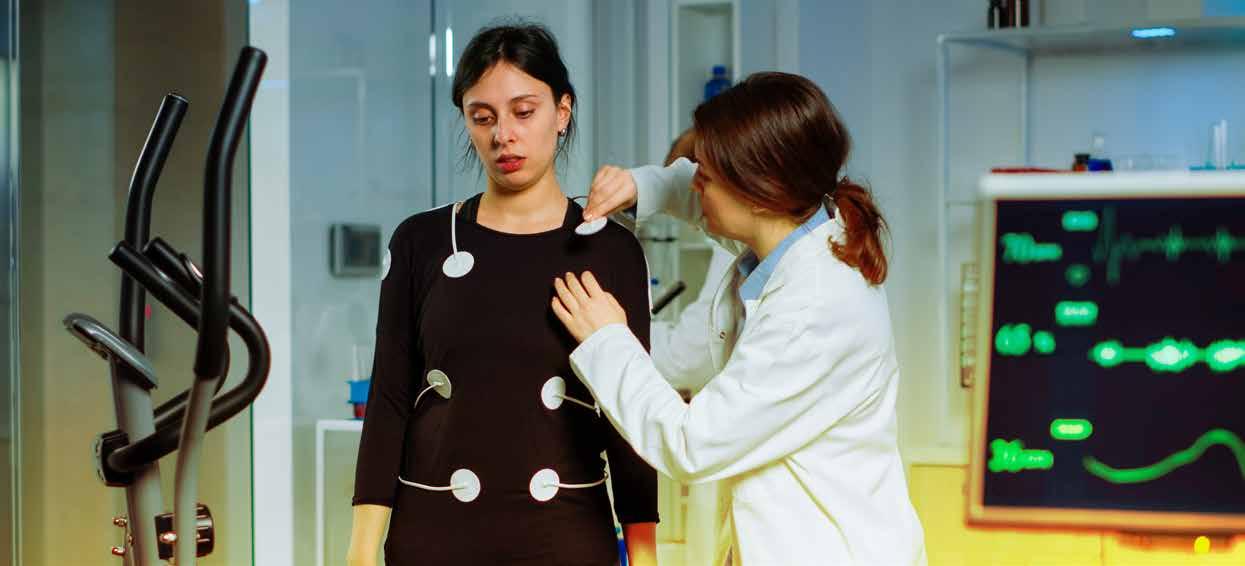
• Exercise stress test: If signs and symptoms occur most often during exercise, your provider may ask you to walk on a treadmill or ride a stationary bike during an ECG.
• Heart (cardiac) CT scan: A CT scan of the heart can show calcium deposits and
blockages in the heart arteries. Calcium deposits can narrow the arteries.
Making certain lifestyle changes can help keep the arteries healthy and can prevent or slow coronary artery disease.
• Quit smoking
• Control blood pressure, diabetes and cholesterol
• Exercise regularly
• Maintain a healthy weight
• Eat heart-healthy foods including plenty of fruits, vegetables, whole grains, legumes and nuts. Avoid saturated fats and trans fats. Reduce salt and sugar.
• Manage and control stress
There are many drugs available to treat coronary artery disease, including medications that can help lower bad cholesterol and reduce plaque buildup in the arteries, aspirin that helps thin the blood and prevent blood clots. Beta blockers are also used to slow the heart rate. They also lower blood pressure. If you've had a heart attack, beta blockers may reduce the risk of future attacks. If these treatments are not successful, the doctor performs a surgery to open the arteries.
CONTROLLING SOME FACTORS CAN PREVENT THE RISK OF DEVELOPING CORONARY ARTERY DISEASE.



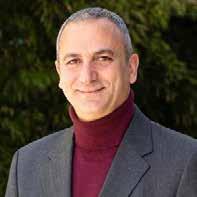


Type 2 diabetes is considered one of the most common chronic diseases in the world, and obesity is the main factor that will increase the risk of developing this medical condition. Losing 5% of weight if you're over weight can lower your risk of developing type 2 diabetes.
Type 2 diabetes is an impairment in the way the body regulates and uses sugar as a fuel. This chronic condition results in too much sugar circulating in the bloodstream. Eventually, high blood sugar levels can lead to disorders of the circulatory, nervous and immune systems. In type 2 diabetes, there are primarily two inter related problems at work. Your pancreas does not produce enough insulin — a hormone that regulates the movement of sugar into your cells — and cells respond poorly to insulin and take in less sugar. There's no cure for type 2 diabetes, but losing weight, eating well and exercising can help you manage the disease. If diet and exercise aren't enough to manage your blood sugar, you may also need diabetes medications or insulin therapy.
Type 1 diabetes is characterized by deficient insulin production and requires daily adminis tration of insulin. It usually affects children and adults under 30. Type 2 diabetes results from the body’s ineffective use of insulin. It comprises the majority of people with diabetes around the world, and is largely the result of excess body weight and physical inactivity.

Glucose is a main source of energy for the cells that make up muscles and other tissues. When your glucose levels are low, the liver breaks down stored glycogen into glucose to keep your glucose level within a normal range.

In type 2 diabetes, this process doesn't work well. Instead of moving into your cells, sugar builds up in your bloodstream. As blood sugar levels increase, the insulin-producing beta cells
in the pancreas release more insulin. Eventually these cells become impaired and can't make enough insulin to meet the body's demands.
Type 2 diabetes is primarily the result of two interrelated problems: Cells in muscle, fat and the liver become resistant to insulin. Because these cells don't interact in a normal way with insulin, they don't take in enough sug ar. The pancreas is unable to produce enough insulin to manage blood sugar levels. The exact cause is unknown, but being overweight and inactive are key contributing factors.
Healthy lifestyle choices can help prevent type 2 diabetes, even if you have a family history of diabetes. If you've received a diagnosis of prediabetes, lifestyle changes may slow or stop the progression to diabetes. Eating healthy food, exercising regularly and losing weight are fundamental to burning fat and excess calories while preventing the development of type 2 di abetes. The benefits of regular physical activity go beyond the prevention of type 2 diabetes; it improves your heart health, mood and stamina while lowering the risk of hypertension and high cholesterol level.
Weight loss is an important goal for per sons affected by excess weight or obesity, par ticularly those with type 2 diabetes. Moderate and sustained weight-loss can improve insulin action, decrease fasting glucose concentrations
LOSING 5% OF WEIGHT IF YOU'RE OVERWEIGHT CAN LOWER YOUR RISK OF DEVELOPING TYPE 2 DIABETES.
and reduce the need for some diabetes medica tions. A program of diet, exercise and behavior modification can successfully treat obesity. Regular physical activity helps maintain weightloss and prevent regain. It also improves insulin sensitivity and glycemic control, may decrease the risk of developing diabetes and reduces mortality in patients with diabetes.
Diabetes is a chronic illness that requires continuing medical care and patient self-man agement education to prevent acute compli cations and to reduce the risk of long-term complications.
A diabetes diet simply means eating the healthiest foods in moderate amounts and sticking to regular mealtimes.
OBESITY AND TYPE 2 DIABETES GO HAND IN HAND IN TERMS OF PREVALENCE, AS OBESITY IS A TRIGGERING FACTOR FOR DIABETES ASSOCIATED WITH INSULIN RESISTANCE.
A diabetes diet is a healthy-eating plan that's naturally rich in nutrients and low in fat and calories. Key elements are fruits, vegeta bles and whole grains. In fact, a diabetes diet is the best eating plan for most everyone. You can help keep your blood glucose level in a safe range by making healthy food choices and tracking your eating habits. You can reduce the risk of the long-term effects of diabetes by keeping blood pressure, blood glucose and cholesterol levels within a normal range.
Nutrition is a critical part of diabetes care. Balancing the right amount of carbohydrates, fat, protein along with fiber, vitamins and minerals helps us to maintain a healthy diet and a healthy lifestyle. Getting the balance right can help the body to stay in prime condition. Carbohydrate intake should emphasize nutri ent-dense carbohydrate sources that are high in fiber, including vegetables, fruits, legumes, whole grains, as well as dairy products.
Regular physical activity is essential to keep blood glucose levels under control, and is most effective when combined with a healthy diet. Physical activity for patients with diabetes will:
• Boost your body's sensitivity to insulin
• Control hypertension
• Improve cholesterol levels
• Facilitate weight loss
• Improve sleep
• Reduce stress and boost the mood
• Increase insulin-independent muscle glucose uptake
A patient with diabetes should exercise regularly in order to improve blood circulation. Activities include swimming, cycling, brisk walk ing and doing fitness exercises for 40 minutes, five times a week.
Exercise is important for losing weight or maintaining a healthy weight. It also helps with regulating blood sugar levels. Before starting any physical activity, check with your healthcare provider to talk about the best physical activi ties for you. Be sure to discuss which activities you like, how to prepare, and what you should avoid. Drink plenty of fluids while being physi

cally active to prevent dehydration. Make sure to check your blood sugar before being physi cally active, especially if you take insulin.
When you’re physically active, wear cotton socks and athletic shoes that fit well and are comfortable. After your activity, check to see how it has affected your blood glucose level. After being physically active, check your feet for sores, blisters, irritation, cuts, or other injuries.

Weight-loss injections are an injectable pre scription medicine used for adults with excess
weight (BMI ≥27) who also have weight-related medical problems or obesity (BMI ≥30), and children aged 12-17 years with a body weight above 132 pounds (60 kg) and obesity to help them lose weight and keep the weight off. They should be used with a reduced-calorie diet and increased physical activity.
Your body naturally produces an appetite hormone known as glucagon-like peptide-1 (GLP-1) that helps to regulate your hunger. Weight-loss injections work like GLP-1 by regu lating your appetite, which can lead to eating fewer calories and losing weight.
REGULAR PHYSICAL ACTIVITY IS ESSENTIAL TO KEEP BLOOD GLUCOSE LEVELS UNDER CONTROL, AND IS MOST EFFECTIVE WHEN COMBINED WITH A HEALTHY DIET
Abdulla bin Mohamed Al Hamed, Chair man of the Department of Health – Abu Dhabi (DoH), launched the ‘Abu Dhabi Community Campaign’ supporting the National Programme for Organ Donation and Transplan tation, ‘Hayat’.
The campaign aims to encourage society members to register as organ and tissue donors, contributing to improving the quality of life of patients suffering from organ failure in the UAE and the region. Al Hamed, the first to register as an organ and tissue donor in the campaign, led by example, encouraging community mem bers to follow suit and participate as donors in the ‘Hayat’ programme. On the side-lines of the International Conference for Initiatives on Organ and Tissue Donation and Transplantation that took place from 7th to 9th November in Abu Dhabi, the ceremony witnessed Al Hamed hon ouring several organ recipients, donors’ families
WE HAVE LEARNED FROM THE MAGNANIMITY OF OUR WISE LEADERSHIP, THE HIGHEST MEANING OF GIVING, OF TOLERANCE, OF BROTHERHOOD AND HOW TO EXTEND A HELPING HAND TO THOSE IN NEED.
ABDULLA
and activists in the field, in appreciation of their sacrifice and effort for being a model of unity and selfless giving.
BINMOHAMED AL HAMED
During the conference, Abdulla bin Mohamed Al Hamed inaugurated an exhibition displaying more than 70 works of art and litera ture highlighting organ donation and its history, both locally and globally. It featured creative artworks, drawings, and inspiring stories by chil dren who have received transplants, in addition to works by professional and local community participants, some of which have won interna tional awards.
Al Hamed stated: “In honour of the legacy of the late Sheikh Zayed bin Sultan Al Nahyan, and in the footsteps of the nation’s leader and President His Highness Sheikh Mohamed bin Zayed Al Nahyan, we continue to consoli date Abu Dhabi’s global position as a leading destination for healthcare. In this, we serve

as an incubator for innovation in life sciences, enhancing capabilities in organ donation and transplantation by supporting The National Programme for Organ Donation and Transplan tation, ‘Hayat’, which is aimed at improving the health and safety of communities.” Al Hamed added: “We have learned from the magnanimity of our wise leadership, the highest meaning of giving, of tolerance, of brotherhood and how to extend a helping hand to those in need. These are well-established societal values that are embodied in organ donation, a noble human itarian act that gives others renewed hope in life. These values create a vivid scenario of community solidarity, where organ donation, whether during life or after death, saves many patients, affording them a full recovery. I invite everyone to contribute to instilling hope in the lives of many around us by registering for the ‘Hayat’ programme.”
The Abu Dhabi community campaign focuses on encouraging all society members to register their request and consent to donate organs and tissues post-mortem, highlighting the success achieved by Abu Dhabi, and show casing the experience and capabilities of the emirate in areas of organ and tissue donation and transplantation.
The programme also aims to continue raising awareness among the community on the importance of adopting a healthy lifestyle, avoiding the chance of developing lifestyle-re lated diseases and organ failure, and thus reduc ing the need for transplantation. This awareness includes regular physical activity and adopting a healthy diet to avoid chronic diseases such as diabetes, high blood pressure, obesity and other health problems.
Dr. Jamal Mohammed Al Kaabi, Under secretary of the Department of Health – Abu Dhabi (DoH), said: “Organ donation is a noble act. Both in life and after death. One person has the potential of saving the lives of eight individuals who are in desperate need of an organ donation. Donating an organ is really a gift of life to many patients, including those suffering from cancer, heart disease, lung
failure, cirrhosis, kidney failure and more.'' “As part of The National Programme for Organ Donation and Transplantation, ‘Hayat’, and on behalf of the Department of Health – Abu Dhabi, we urge all members of society to learn about the programme and take the initiative to register on the ‘Hayat’ platform, thereby contributing to saving and improving the lives of many around them in need. Thus, together we can create hope and give the gift of life to many patients.”
The International Conference for Initiatives on Organ and Tissue Donation and Transplan tation, held in Abu Dhabi from November 7 to 9, 2022 at the Abu Dhabi National Exhibition Centre (ADNEC), aimed to shed light on global experiences and best practices related to the scientific, charitable, societal and legal aspects of organ donation, in addition to raising aware ness around healthy living and prevention of disease in the community.
The National Programme for Donation and Transplantation of Human Organs and Tissue, ‘Hayat’ is a national system to enhance efforts for the donation and transplantation of human organs and tissues in accordance with the high est international standards and practices in the United Arab Emirates and the region. Working in coordination with various strategic partners locally and globally to save lives, it continues to improve the health and safety of the community and improve the quality of life.
The programme is a synergy of collaborative efforts of many federal and local authorities, including the Ministry of Health and Prevention – UAE, the Department of Health – Abu Dha bi, the Dubai Health Authority, the Abu Dhabi Health Services Company (SEHA), the Cleveland Clinic Abu Dhabi, Sheikh Shakhbout Medical City and several governmental and private health facilities across the country.
The conference is being organised by the National Organ Donation and Transplant Com mittee, represented by the Ministry of Health and Prevention, the Department of Health –Abu Dhabi, the Dubai Health Authority, health facilities specialising in organ transplantation, and several other local and federal stakeholders.
AS PART OF THE NATIONAL PROGRAMME FOR ORGAN DONATION AND TRANSPLANTATION, ‘HAYAT’, AND ON BEHALF OF THE DEPARTMENT OF HEALTH – ABU DHABI, WE URGE ALL MEMBERS OF SOCIETY TO LEARN ABOUT THE PROGRAMME AND TAKE THE INITIATIVE TO REGISTER ON THE ‘HAYAT’ PLATFORM, THEREBY CONTRIBUTING TO SAVING AND IMPROVING THE LIVES OF MANY AROUND THEM IN NEED. THUS, TOGETHER WE CAN CREATE HOPE AND GIVE THE GIFT OF LIFE TO MANY PATIENTS
.
JAMALDR.
MOHAMMED AL KAABI

 by Aylin Altuntas, Founder at AA Executive Consulting and Board Member at Future Conferences
by Aylin Altuntas, Founder at AA Executive Consulting and Board Member at Future Conferences
A2021 survey results in Great Britain points out that, the employees feel 73% more burnout since the pandemic started; Y & Z generation having the highest scores with 80% compared to the other age groups. The psychotherapist Kim Hollingdale at Pepperdine University, expert at recovering from burnout syndrome, states that the stress caused by Covid-19 pandemic results in the highest level of burnout at all age groups.
Yet, Hollingdale believes in the worklife, generation Z is having the worst stress fac tors; with feeling powerless at the workplace, financial instability, the normalization of chaos culture and the lack of relaxation facilities. To day, the wages are not increasing in parallel with
the soaring inflation rates. Hollingdale states that generation Z feels the pressure to work in a second job to be able to pay their bills or buy a house that may lead to the burnout syndrome easily. (Andrew Yu, BBC Worklife)
Andrew Deutscher at Forbes Magazine on the other hand, groups the leaders working to the edge and having burnout syndrome in the workplace into 4 categories:
These leaders are so successful that they shine like stars in the workplace throughout their career. They burnout for two reasons: The company underestimates the commitment of
these employees and assuming that their per formance will last forever, they undervalue their effort. Since nobody can reach their competen cies, they take in charge far above the tasks they assign with their positions.
The group of managers checking the e-mails as first thing in the morning, replying to the messages while having their breakfast, talking on the phone while doing their sports or watch ing TV. They can text with one hand while hold ing their child’s bicycle with the other. These leaders aim for high sales scores and a good career. They tend to lose themselves at the edge of communication and perfectionism.
These managers tend to please everybody around with saying ‘yes’ to everything. They are anxious that they may not be needed at the workplace one day. They may be loved but saying always ‘yes’ causes their authority to be questioned. Since they are reachable at all times, they are always busy, which may result in missing the important task they need to oversee.
The managers are workaholics who love to overdo. They undertake important projects and don’t like to delegate. They work until late hours and love to impress other people. They may carry on working hard and late until they are exhausted one day and are forced to make a sudden change...
If we have the scarce of Iron C or D vita mins, we take supplements to regain our health. Our mental wellbeing is affected with 8 listed factors. Determining the halting element and trying to support and fix the failing factor in our lives may help us to decrease the tension.
Doing sports, eating healthy food and sleeping well.
A 2021 SURVEY RESULTS IN GREAT BRITAIN POINTS OUT THAT, THE EMPLOYEES FEEL 73% MORE BURNOUT SINCE THE PANDEMIC STARTED; Y & Z GENERATION HAVING THE HIGHEST SCORES WITH 80% COMPARED TO THE OTHER AGE GROUPS.
Sense of belonging to a group, connection with people and a strong social support group.
3. Spiritual
To develop a purpose of life, engaged in charity works.
4. Emotional
To be able to cope with the difficulties of life, to build meaningful relations.
To spend time in a natural living environ ment to enhance and protect health.

The financial conditions that does not cause too much worry for the present and the future.
7. Intellectual
Get busy with the activities developing the creative mind and the skills .
‘LIFE IS THE WAR OF WILLPOWER ’.
Cholera is an acute diarrheal illness caused by infection of the intestine with Vibrio cholerae bacteria. People can get sick when they swallow food or water contam inated with cholera bacteria. Cholera causes severe diarrhea and dehydration. Left untreat ed, cholera can be fatal within hours, even in previously healthy people.
The incubation period is between 12 hours and five days after ingestion of contaminated food or water. Due to the short incubation peri od of cholera, outbreaks can develop rapidly. The deadly effects of the disease are the result of a toxin the bacteria produce in the small intestine. The toxin causes the body to secrete enormous amounts of water, leading to diarrhea and a rapid loss of fluids and salts (electrolytes). Personal hygiene and drinking only bottled water are the most important preventive measures. In addition to that, it is recommended to receive the cholera vaccine for people traveling to or living in areas of active cholera transmission.
A person can get cholera by drinking water or eating food contaminated with cholera bac teria. In an epidemic, the source of the contami nation is usually the feces of an infected person that contaminates water or food. The disease can spread rapidly in areas with inadequate treatment of sewage and drinking water.

Cholera bacteria might not cause illness in all people who are exposed to them, but they still pass the bacteria in their stool, which can contaminate food and water supplies. Con taminated water supplies are the main source of cholera infection. The bacterium can be found in surface or well water; contaminated public wells are frequent sources of large-scale cholera outbreaks. People living in crowded conditions without adequate sanitation are especially at risk.
Eating raw or undercooked seafood, especially shellfish, that comes from certain places can expose you to cholera bacteria. Raw, unpeeled fruits and vegetables are a frequent source of cholera infection in areas
spreads quickly in areas without clean water and proper sanitation
where there's cholera. In developing countries, uncomposted manure fertilizers or irrigation water containing raw sewage can contaminate produce in the field. In regions where cholera is widespread, grains such as rice and millet that are contaminated after cooking and kept at room temperature for several hours can grow cholera bacteria.
What are the symptoms of cholera?
Most cases of cholera cause mild or moder ate diarrhea that's often hard to tell apart from diarrhea caused by other problems. Others develop more-serious signs and symptoms of cholera, usually within a few days of infection.
Symptoms of cholera infection can include:
Diarrhea: Cholera-related diarrhea comes on suddenly and can quickly cause dangerous fluid loss.
Nausea and vomiting: Vomiting occurs especially in the early stages of cholera and can last for hours.
Dehydration: Dehydration can develop within hours after cholera symptoms start and range from mild to severe. A loss of 10% or more of body weight indicates severe dehydration.
Signs and symptoms of cholera dehydration include irritability, fatigue, sunken eyes, a dry mouth, extreme thirst, dry and shriveled skin that's slow to bounce back when pinched into a fold, little or no urinating, low blood pressure, and an irregular heartbeat.
Although shock and severe dehydration are the worst complications of cholera, other problems can occur, such as:
Low blood sugar (hypoglycemia): Danger ously low levels of blood sugar (glucose) — the body's main energy source — can occur when people become too ill to eat. Children are at greatest risk of this complication, which can cause seizures, unconsciousness and even death.
Low potassium levels: People with chol era lose large quantities of minerals, including potassium, in their stools. Very low potassium levels interfere with heart and nerve function
CHOLERA BACTERIA MIGHT NOT CAUSE ILLNESS IN ALL PEOPLE WHO ARE EXPOSED TO THEM, BUT THEY STILL PASS THE BACTERIA IN THEIR STOOL, WHICH CAN CONTAMINATE FOOD AND WATER SUPPLIES. CONTAMINATED WATER SUPPLIES ARE THE MAIN SOURCE OF CHOLERA INFECTION. THE BACTERIUM CAN BE FOUND IN SURFACE OR WELL WATER; CONTAMINATED PUBLIC WELLS ARE FREQUENT SOURCES OF LARGESCALE CHOLERA OUTBREAKS. PEOPLE LIVING IN CROWDED CONDITIONS WITHOUT ADEQUATE SANITATION ARE ESPECIALLY AT RISK.
and are life-threatening.
Kidney failure: When the kidneys lose their filtering ability, excess amounts of fluids, some electrolytes and wastes build up in the body — a potentially life-threatening condition. In people with cholera, kidney failure often accompanies shock.
Cholera requires immediate treatment because the disease can cause death within hours. The goal is to replace lost fluids and electrolytes using a simple rehydration solution, oral rehydration salts (ORS). The ORS solution is available as a powder that can be made with boiled or bottled water. Without rehydration, approximately half the people with cholera die. With treatment, fatalities drop to less than 1%.
Most people with cholera can be helped by oral rehydration alone, but severely dehydrat ed people might also need intravenous fluids. While not a necessary part of cholera treat ment, some antibiotics can reduce cholera-re lated diarrhea and shorten how long it lasts in severely ill people. Research has shown that zinc might decrease diarrhea and shorten how long it lasts in children with cholera.
Cholera vaccines are effective at preventing cholera. For the first six months after vaccina tion, they provide about 85% protection and 50% protection after 3 years from taking the vaccine. Most travelers do not need cholera vac cine. If you are an adult 18 through 64 years old traveling to an area where people are getting infected with cholera, your healthcare provider might recommend the vaccine for you at least ten days before you travel.
• Wash your hands with soap and water frequently
• Drink only safe water
• Eat food that's completely cooked and hot
• Avoid sushi, as well as raw or improper ly cooked fish and seafood of any kind
• Wash and sterilize vegetables and fruits.
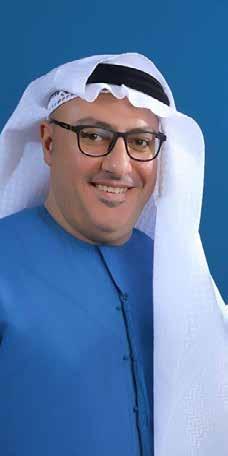
The use of digital health technologies has become universal, and there has never been a time when the global population was more connected than these days due to the applications of technology in healthcare. Innovation is occurring on a scale that has never been seen before, especially in the digital area. The potential for using digital health solutions is enormous, mainly related to improving popula tion health.
In order to improve the effectiveness of healthcare delivery and to make medicine more individualized and accurate, the field of "digital health" combines digital care programs and
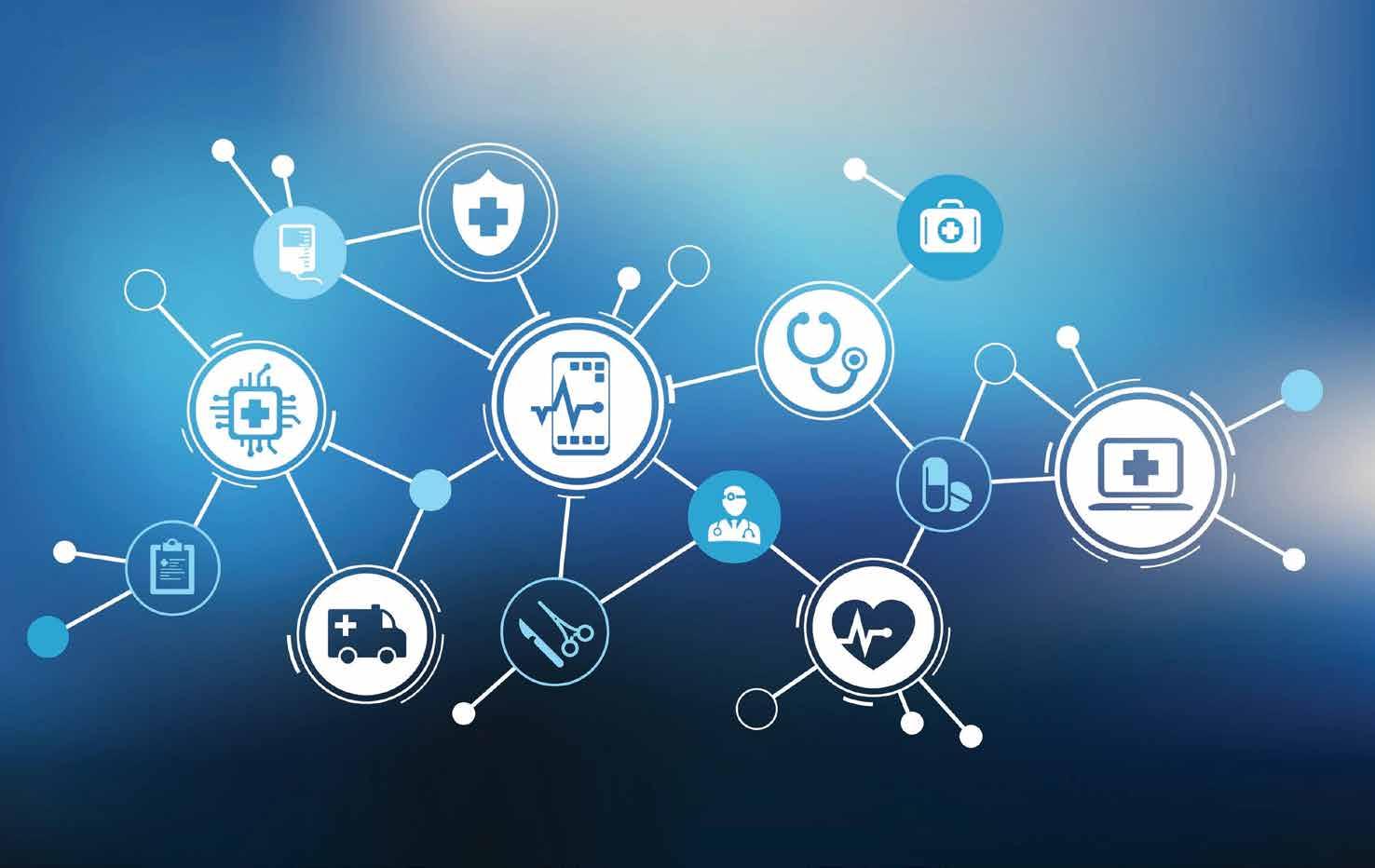
technology with health, healthcare, living, and society. It makes the use of information and communication technology to enable a more individualized and accurate assessment of the health issues and difficulties faced by patients undergoing medical treatment and social prescribing. There are various ways in which the definitions of digital health and its scope overlap with those of health and medical informatics. Since 1990, there has been an increase in the use of electronic medical records on a global scale, which is directly tied to the availability of universal health care.
A wide range of stakeholders, including doc tors, researchers, and scientists with a variety
of specialties in healthcare, engineering, social sciences, public health, health economics, and data management, are involved in the multi disciplinary field of digital health. The goal of this report is to paint the picture of what digital health means and to provide a comprehensive overview of Digital health and the role of aca demic institutions in supporting technology in healthcare.
The term “Digital health” is used to describe digital information or data and communications technologies to collect, share, and manipulate health information to improve patient health and healthcare delivery. Hence, this definition encompasses a wide variety of software and data technologies (e.g., data collections and an alytics, artificial intelligence, electronic health records (EHRs), virtual and augmented reality), hardware (e.g., smartphones, tablets, com puters, sensors, medical devices), and services using this technology such (e.g., synchronous and asynchronous video conferencing, mHealth apps, remote monitoring or telemonitoring).
Through the use of technology, countries in the Middle East and North Africa are boosting their healthcare systems and expanding access for their citizens. The GCC nations have made progress in enhancing their health systems during the previous few decades.
Patients throughout the region would ben efit from more effective and efficient health systems, more innovation, more options for health care, quicker access to new treatments, and early prevention. The rise in the burden of non-communicable diseases and the previ ous sudden onset of pandemic communicable diseases are considered demands for adopting technology in healthcare to ensure a healthy future.
As the GCC continues to see significant growth in health systems, population and technology, countries in this region will apply greater investment in digital health to bridge the gap between face-to-face clinical practice
AS THE GCC CONTINUES TO SEE SIGNIFICANT GROWTH IN HEALTH SYSTEMS, POPULATION AND TECHNOLOGY, COUNTRIES IN THIS REGION WILL APPLY GREATER INVESTMENT IN DIGITAL HEALTH TO BRIDGE THE GAP BETWEEN FACE-TO-FACE CLINICAL PRACTICE AND REMOTELY TREATMENT BY CONSIDERING THE HYBRID MODEL WITH THE ASSISTANCE OF DIGITAL HEALTH
and remote treatment by considering the hy brid model with the assistance of digital health. Digital health allows a more personalized and patient-centric approach.
There is an urgent need to draw more attention to Public Health Informatics System (PHIS) with emphasis on Non-communica ble and communicable diseases data from different sources related to Patients' health records aligning to electronic health records and disease registries. More roles of artificial intelligence and Machine learning applications through the public health system need to be considered from a strategic perspective toward healthcare system infrastructure.
For instance, presenting the role of digital tele-screening for pre-diseases (i.e. diabetes, hypertension, obesity...) and Machine learning prediction to all risk factors and using validated tools for screening and improving quality of life for people. This target can be applied when academic institutions align with local health au thorities' efforts and build their curricula from industry experience and share with the industry their perspective toward their progress and performance improvement.
Further, Metaverse recently start booming in the healthcare field as an educational tool or as an industry clinical application tool. In the up coming years, we will see more experience and applications of Metaverse at different levels in the Middle East.
We conclude here that digital health is a rapidly evolving field and new technologies are being developed each day. Connecting aca demic institutions and industry would help in PHIS development in order to meet the needs and demand for technology in healthcare. Also, align with local health authorities to establish a solid policy to monitor the applications of tech nology with emphasis on patient data security and confidentiality.
hawad@hct.ac.ae hamzeh.awad@icloud.com
Conducted since 2016 in Marseille, the experimental research program "Re bound" is "a true social innovation, with the vocation of setting a precedent."
With Professor Didier Blaise, Head of the IPC's Hematology and Cell Therapy Depart ment, and Pierre Dantin, University Professor and Vice-Dean of the Faculty of Sports Sciences at Luminy, Professor Patrice Viens, Director General of the Paoli-Calmettes Institute, is certain of one thing: the combined skills of specialists in the medical world and in high-lev el sports help people to recover from illness. He continues: "When a cancer is cured, we tend to say: now it's over, it will be like before. But it's never like before. It's a new life that starts again. You don't reset the clock, that's not true.
Accustomed to managing great coaches and athletes on a mental level, Pierre Dantin has always been convinced of the psychological and regenerative virtues of sport. And of the interactions between health and sport. Based on his experiences, he said to himself: why not? "With the creation of our research unit, thanks to the joint work undertaken with the first pa tients, the program is a true social innovation," he says, "with the vocation of being a school.
The super coach, helped by the interven tions with patients of great coaches and cham pions that he accompanied, specifies: "The idea is not to accelerate the process of psychological healing of the patient but to redefine his own identity. To break the line of dependence. So that he returns to autonomy, with the ability to make decisions about his life again.
Giving back "crescendo" goals, resocializ ing, faster, stronger, were the initial goals of the first patients in the program. Already a research and university training program, Re bond has in mind to address other pathologies.
So that patients will no longer be afraid of "the great emptiness ahead of them" when they come out of such trials. At the university level, the laboratory has set up a coaching program, unique in France, at the Faculty of Medicine in Marseille.
This program combines the skills of the medical world with the talents of the sports world to explore and develop a model that transposes the benefits of elite sports coaching to the health sector for patients in remission. The aim of "Rebound 1" was to test the feasibil ity of using the levers of performance manage ment in high-level sport on transplant patients in remission. The results showed that the impact of this coaching on the psychological and social recovery of patients over time is un deniably positive and promising. The Rebound 2 clinical research trial was developed with the collaboration of former transplant patients and experts, in a participatory approach of active health democracy.
The model was first tested with a group of ten patients who had received an allogeneic bone marrow transplant.
"Treated for hematological cancers - for which the prognosis has, for a long time, been very unfavorable - these patients undergo heavy and lengthy care, and are therefore con fronted with particular difficulties when they approach their remission and, finally, their vic tory over the disease," explains Professor Didier Blaise, Head of the Hematology and Cellular Therapy Department at the IPC.
The first experiments involving allogeneic transplant patients produced very positive feedback, and the prospect of extending the program to more patients encouraged the continuation of the experiment.
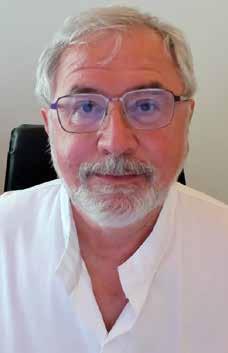

Joint Commission International (JCI) enables hospitals, health systems and clinics to achieve a greater level of performance excellence for those they serve through our expansive portfolio of quality improvement products and services.

No matter where your organization may be today in its journey toward safe, consistent care we can help you continue to advance and excel.

Learn why thousands of organizations just like yours have chosen JCI to help them build, standardize, and strengthen essential processes—earning our coveted Gold Seal of Approval®, a universally recognized symbol of striving to achieve a higher bar in quality and patient safety.
For more information, please visit: www.jointcommissioninternational.org
